Feed aggregator
Heir of Light, hardcover dustjacket
Coming Up For Air | Lewis Buzbee’s “Diver” Elegantly Explores Submerged Emotions
There is powerful storytelling in Lewis Buzbee’s Diver. In the same way you can be…
The post Coming Up For Air | Lewis Buzbee’s “Diver” Elegantly Explores Submerged Emotions appeared first on LitStack.
Teaser Tuesdays - The Naturalist Society
 Beth wondered why showing her journals to Mr. Harold Stanley felt more risqué than stealing a kiss. her heart raced; her hands shook.
Beth wondered why showing her journals to Mr. Harold Stanley felt more risqué than stealing a kiss. her heart raced; her hands shook.(page 3 The Naturalist Society by Carrie Vaughn)
---------
Teaser Tuesdays is a weekly bookish meme, previously hosted by MizB of Should Be Reading. Anyone can play along! Just do the following: - Grab your current read - Open to a random page - Share two (2) “teaser” sentences from somewhere on that page BE CAREFUL NOT TO INCLUDE SPOILERS! (make sure that what you share doesn’t give too much away! You don’t want to ruin the book for others!) - Share the title & author, too, so that other TT participants can add the book to their TBR Lists if they like your teasers!
Wizard Battles and Martial Arts: Legend of the Condor Heroes: The Gallants

Good afterevenmorn!
So, my various social media algorithms were working overtime the past couple of months, bombarding me with clips and training videos for the Chinese movie Legends of the Condor Heroes: The Gallants. And, of course, my interest was more than a little piqued. When I heard that the movie was getting an international release, I got more than a little excited.
Given how much I adore Chinese dramas, and kung fu movies, and the fact that I train kung fu and Chinese kickboxing (called San Da, or less frequently San Shou), there was no way in hell that I would not be going out to see this film.
I went in pretty much blind, with only a trailer (which gave nearly nothing away), and the training videos. So it had virtually no idea what it was all about. This will matter quite a bit, as we will see.
The trailer I saw
What I learnt after the fact is that this film is loosely based on the first (射鵰英雄傳 (The Legend of the Condor Heroes)) of a trilogy of books by Chinese author 金庸 (Jin Yong), which I have not read (but would love to get my hands on a translation of). The novels are technically Wixia, a Chinese historical fantasy, which typically follow an unattached warrior who follows a chivalric code (俠 (xia)). Emphasis on fantasy in this case. More on that later.
Now, I am quite familiar with the male lead Xiao Zhan (肖战), who has been in a number of dramas I’ve watched, but is probably most famous for his role in The Untamed here in the Western Hemisphere. He’s a very talented actor, and I’ve enjoyed most everything I’ve seen him in (and even the ones that were so-so, he was the bright spot for). And I’m so pleased that there was a foreign film that I didn’t have to find a niche theatre for. I was, and am, very happy to encourage more of that.
The last Chinese film I saw in theatres was Crouching Tiger, Hidden Dragon. So… quite a while ago. I remember it absolutely blowing me a way (and wrecking me emotionally), so I was really eager to see this. With that in mind, off I trundled with a couple of my martial arts students on Sunday to watch the movie.
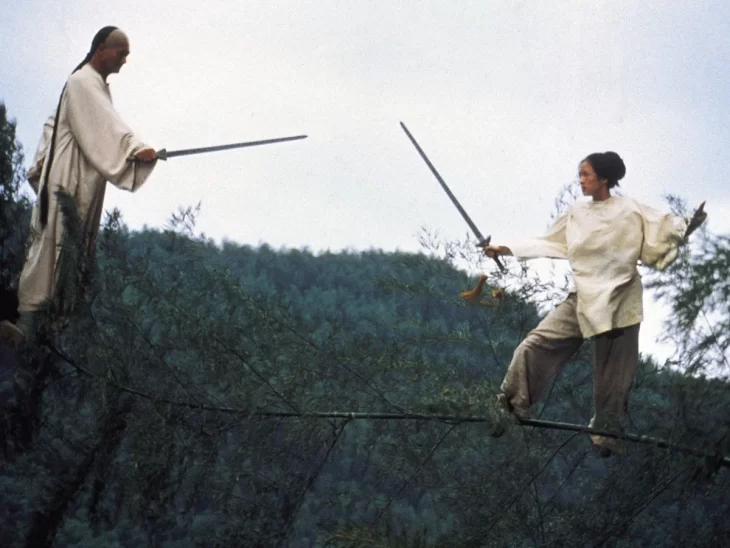 There are three movies I will rewatch any time I need a good cry. This is one of them.
There are three movies I will rewatch any time I need a good cry. This is one of them.
The movie centres on one Guo Jing (郭靖), a Han Chinese man from the Song Dynasty raised in Mongolia by the Khan who took him and his mother in following the strife between the Jin and Song empires (the Jin rise to power shattered the Song Dynasty, and they moved south to become the Southern Song Empire), and the tension between his two identities — a Han Chinese man from the Southern Song Empire and a man raised as a Mongol, by the Khan, and sworn brother to Mongols.
And it was great! A whole lot of fun; but with some caveats.
The first is that, as this was based on a novel, there is a lot of information packed into a relatively short amount of time (just over 2 hours), and if you’re not paying attention, you miss an awful lot. For those of us unfamiliar with the source material, it did lessen the emotional impact of certain scenes. It might be just my 40 episode drama-watching brain, but this probably could have been a couple of movies.
An awful lot is glossed over rather quickly in what feels like a “Previously On” moment. I was left with the feeling that there was a prequel movie that I have not seen. I haven’t done any research on whether that was the case as of the writing of this. When we finally get into the meat of the movie, Guo Jing has separated from the woman he loves, whom he travelled all over the Middle Lands and trained with, and has already mastered the techniques from a much-sought-after scroll, whom this young woman (Huang Rong (黃蓉)) apparently has possession of. Following so far?
 Our heroes Huang Rong and Guo Jing
Our heroes Huang Rong and Guo Jing
Separated, Huang Rong is pursued by three of the five masters — a martial art specialists from three of the five styles of martial arts (kung fu… sort of) in the Middle Lands. The lead, Venom West, desperately wants the scroll she carries. He was, apparently, preciously defeated by Guo Jing in an encounter we only get flashbacks of (rather disappointingly).
I’m not going to give too much away, but eventually the lovers reunite, and simultaneously save both the Khan and the Southern Song Empire; the Khan from Venom West, who has gone mad, and the Southern Song from the Mongols, who were just themselves saved.
The story itself was very fun, with some impressive action sequences, but I find myself a little disappointed that they weren’t more grounded. Remember when I mentioned that the emphasis was on fantasy? Well, all the fighting in this was basically magic battles between wizards. There was actually very little proper fighting involved. Given the training videos I saw, I was expecting a little more proper combat.
One of several videos that promised something that wasn’t delivered.
Crouching Tiger, Hidden Dragon leant into the fantasy, what with the flying through the air and landing on bamboo as if their bones were hollow/they could actually levitate. But the fighting in that was actual fighting; highly choreographed, but fighting all the same. With that as my only reference for Chinese movies, and with the training videos, I do feel a little cheated. Particularly since in several of the training videos, I could recognise the styles employed.
There was no real hand-to-hand combat in the film.
Now, it’s entirely possible that the training shorts I saw were actually for a completely different project. I do know that many of these actors are incredibly busy, working or three or more projects a year. So it’s entirely possible that all the videos were mislabelled and were for something else entirely.
The movie also ends in what feels like the middle of the story. Hardly surprising since it’s the first book in a trilogy. The sort-of middle-of-the-story vignette that this film presents is not unlike My Neighbour Totoro. Both movies left me with an “this is unfinished” feeling.
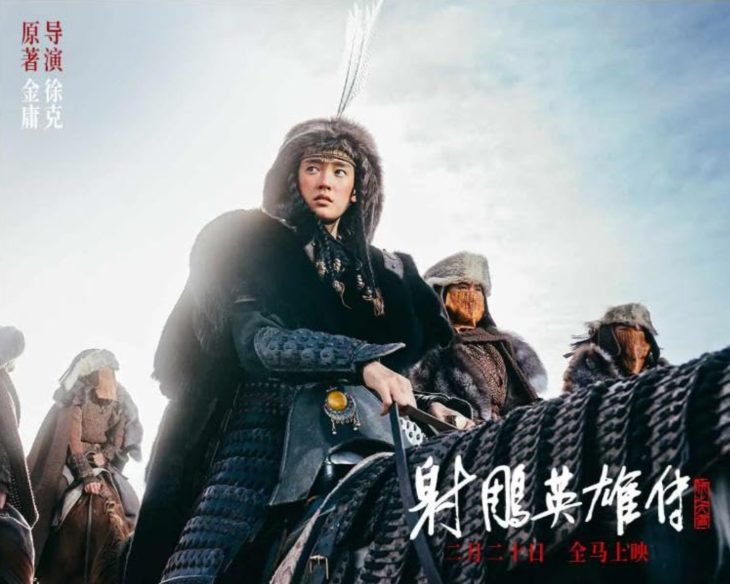 The Khan’s daughter and a love rival. I loved her character a lot.
The Khan’s daughter and a love rival. I loved her character a lot.
Despite the slight disappointment of all the fights being wizard battles, and the unusual feeling of being shown but a snippet of a story, however, the movie was a whole lot of fun. I loved hearing both Mandarin and Mongolian. I loved how the Mongols weren’t made the villains (I initially thought they were, and it would have been easy to have made them thus — kind of like Russians for 80s Hollywood movies). And I adored having something other than the increasingly formulaic and mindless films we’ve been fed of late to spend a Sunday afternoon watching.
I really do wish more foreign films would get wide releases like this. We could use the fresh perspectives and fascinating stories other cultures bring. I had a lot of fun with this one. If you are going to see it, you must pay close attention, but it was certainly worth it. If there are sequels that make it out our way, I’ll definitely be watching. But first, I need to get my hands on English versions of these books!
When S.M. Carrière isn’t brutally killing your favorite characters, she spends her time teaching martial arts, live streaming video games, and cuddling her cat. In other words, she spends her time teaching others to kill, streaming her digital kills, and a cuddling furry murderer. Her most recent titles include Daughters of Britain, Skylark and Human. Her serial The New Haven Incident is free and goes up every Friday on her blog.
Free Fiction Monday: Discovery
Pita Cardenas finds herself with the toughest case of her career. The only attorney in the small town of Rio Gordo, she decides to fight the biggest railroad company in the state to get compensation for the widow of a man who might have raced a train.
Everyone thinks the man guilty. Even Pita believes that. But the truth, once discovered, proves far more complicated that Pita could have imagined.
Another powerful and haunting mystery story by New York Times bestselling author Kristine Kathryn Rusch, “Discovery” was nominated for the Shamus Award for Best Short Story.
“Discovery” is available for one week on this site. The ebook is also available on all retail stores, as well as here.
Discovery By Kristine Kathryn Rusch“OVER THERE.” Pita Cardenas waved a hand at the remaining empty spot on the floor of her office. The Federal Express deliveryman rested a hand on top of the stack of boxes on his handcart.
“I don’t think it’ll fit.”
It probably wouldn’t. Her office was about the size of the studio apartment she’d had when she went to law school in Albuquerque. She could have had a cubicle with more square footage if she’d taken the job that La Jolla, Webster, and Garcia offered her when she graduated from law school five years before.
But her mother had been dying, and had refused to leave Rio Gordo. So Pita had come back to the town she thought she’d escaped from, put out her shingle, and had gotten a handful of cases, enough to pay the rent on this sorry excuse for an office. If she’d wanted something bigger, she would have had to buy, and even at Rio Gordo’s depressed prices, she couldn’t afford payments on the most dilapidated building in town.
She stood up. The Fed Ex guy, who drove here every day from Lubbock, was looking at her with pity. He was trim and tanned, with a deep West Texas accent. If she had been less tired and overwhelmed, she would have flirted with him.
“Let’s put this batch in the bathroom,” she said and led the way through the rabbit path she’d made between the boxes. The Fed Ex guy followed, dragging the six boxes on his hand truck and probably chafing at the extra time she was costing him.
She opened the door. He put the boxes inside, tipped an imaginary hat to her, and left. She’d have to crawl over them to get to the toilet, but she’d manage.
Six boxes today, twenty yesterday, thirty the day before. Dwyer, Ralbotten, Seacur and Czolb was burying her in paper.
Of course, she had expected it. She was a solo practitioner in a town whose population probably didn’t equal the number of people who worked at DRS&C.
People had told her she was crazy to take this case. But she was crazy like an impoverished attorney. Every other firm in New Mexico had told her client, Nan Hughes, to settle. The problem was that Nan didn’t want to settle. Settling meant losing everything she owned.
Pita took the case and charged Nan two thousand dollars, with more due and owing when (if) the case went to trial. Pita didn’t plan on taking the case to trial. At trial, she wouldn’t just get creamed, she’d be pureed, sautéed and recycled.
But she did plan to work for that two grand. She would spend exactly one month filing motions, doing depositions, and listening to offers. She figured once she had actual numbers, she’d be able to convince Nan to take a deal.
If not, she’d resign and wish Nan luck finding a new attorney.
Her actions wouldn’t hurt Nan. Nan had a spectacular loser of a case. She was taking on the railroads and two major insurance companies. She had no idea how bad things could get.
Pita would show her. Nan wouldn’t exactly be happy with her lot—how could she be, when she’d lost her husband, her business, and her home on the same day?—but she would finally understand how impossible the winning was.
Pita was doing her a favor and making a little money besides.
And what was wrong with that?
***
At its heart, the case was simple. Ty Hughes tried to beat a train and failed. He survived long enough to leave his wife a voice mail message, which Pita had heard in all its heartbreaking slowness:
“Nan baby, I tried to beat it. I thought I could beat it.”
Then his diesel truck engine caught fire and he died, horribly alive, in the middle of the wreck.
The accident occurred on a long stretch of brown nothingness on the New Mexico side of the Texas/New Mexico border. A major highway ran a half mile parallel to the tracks. On the opposite side of the tracks stood the Hughes ranch and all its outbuildings.
Nan Hughes and the people who worked her spread watched the accident. She didn’t answer her cell because she’d left it on the kitchen counter in her panic to get down the dirt road where her husband’s cattle truck had been demolished by a fast-moving train.
And not just any train.
This train pulled dozens of oil tankers.
It was a miracle the truck engine fire hadn’t spread to the tankers and the entire region hadn’t exploded into one great fireball.
Pita had been familiar with the case long before Nan Hughes came to her. For weeks, the news carried stories about dead cattle along the highway, the devastated widow, the ruined ranch, and the angry railroad officials who had choice (and often bleeped) words about the idiots who tried to race trains.
It didn’t matter that the crossing was unmarked. Even if Ty hadn’t left that confession on Nan’s voice mail (which she had deleted but which the cell company was so thoughtfully able to retrieve), trains in this part of the country were visible for miles in either direction.
The railroads wanted the ranch, the cattle (what was left of them), the life insurance money, and millions from the ranch’s liability insurance. The liability insurance company was willing to settle for a simple million, and the other law firms had told Nan to sell the ranch, and pay the railroads from the proceeds. That way she could live on Ty’s life insurance and move away from the site of the disaster.
But Nan kept saying that Ty would haunt her if she gave in. That he had never raced a train in his life. That he knew how far away a train was by its appearance against the horizon—and that he had taught her the same trick.
When Pita gently asked why Ty had confessed to trying to beat the train, Nan had burst into tears.
“Something went wrong,” she said. “Maybe he got stuck. Maybe he hadn’t looked up. He was in shock. He was dying. He was just trying to talk to me one last time.”
Pita could hear any good lawyer tear that argument to shreds, just using Ty’s wording. If Ty wanted to talk with her, why hadn’t he told her he loved her? Why had he talked about the train?
Pita had gently asked that too. Nan had looked at her from across the desk, her wet cheeks chapped from all the tears she’d shed.
“He knew I saw what happened. He wanted me to know he never would have done that to me on purpose.”
In this context, “on purpose” had a lot of different definitions. Ty Hughes probably didn’t want his wife to see him die in a train wreck, certainly not in a train wreck he caused. But he had crossed a railroad track with a double-decker cattle truck filled carrying two hundred head. He had no acceleration, and no maneuverability.
He’d taken a gamble, and he’d lost.
At least, Nan hadn’t seen the fire in the cab. The truck had flipped over the train, landing on the highway side of the tracks, and had been impossible to see from the ranch side. Whatever Ty Hughes’s last few minutes had looked like, Nan had missed them.
She had only her imagination, her anger at the railroads, and her unshakeable faith in her dead husband.
Those were not enough to win a case of this magnitude.
If someone asked Pita what her case really was (and if this imaginary someone could get her to answer honestly), what she’d say was that she was going to try Ty Hughes before his wife, and show her how impossible a defense of the man’s actions that morning would be in court.
And Pita believed her own powers of persuasion were enough to convince her jury of one to settle.
***
But the boxes were daunting. In them were bits and pieces of information, reproduced letters and memos that probably showed some kind of railroad duplicity, however minor. A blot on an engineer’s record, for example, or an accident at that same crossing twenty years before.
If Pita had the support of a giant law firm like La Jolla, Webster, and Garcia, she might actually delve into that material. Instead, she let it stack up like unread novels in the home of an obsessive compulsive.
The only thing she did do was take out the witness list, which had come in its own envelope as part of court-ordered discovery. The list had the witnesses’ names along with their addresses, phone numbers, and the dates of their depositions. DRS&C was so thorough that each witness had a single line notation at the bottom of the cover sheet describing the reason the witness had been deposed in this case.
The list would help Pita in her quest to recreate the accident itself. She had dozens of questions. Had someone inspected the truck to see if it malfunctioned at the time of the accident? Why had Ty stayed in the truck when it was clear that it was going to catch fire? How badly had he been injured? How good was Ty’s eyesight? And how come no one helped him before the truck caught fire?
She was going to cover all her bases. All she needed was one argument strong enough to let Nan keep the house.
She was afraid she might not even find that.
DRS&C’s categories were pretty straightforward. They had categories for the ranch, the railroad, and the eyewitnesses.
A number of the witnesses belonged to separate lawsuits, started because of the fender benders on the nearby highway. About a dozen cars had damage—some while they were stopped beside the road, and others because they’d been going too fast to stop when the train accident occurred.
Pita started charting the location of the cars as she figured this category out, and realized all of them had been in the far inside lane, going east. People who had pulled over to help Ty and the railroad employees had instead been dealing with accidents involving their own cars.
A separate group of accident victims had resolved insurance claims: their vehicles had been hit or had hit a cow that had escaped from the cattle truck. One poor man had had his SUV gored by an enraged bull.
Cars heading west had had an easier time of things. None had hit each other and a few had stopped. Of those who had stopped, some were listed as 911 callers. One had grabbed a fire extinguisher and eventually tried to put out the truck cab fire. That person had prevented the fire from spreading to the tankers.
But the category that caught Pita’s attention was a simple one. Several people on the list had been marked “Witness,” with no accompanying explanation.
One had an extra long zip code, and as she entered it into her own computer data base, she realized that the last three digits weren’t part of the zip code at all.
They were a previous notation, one that hadn’t been deleted.
Originally, this witness had been in the 911 category.
She decided to start with him.
***
C.P. Williams was a Texas financier of the Houston variety, even though his offices were in Lubbock. He wore cowboy boots, but they were custom made, hand-tooled jobbies that wouldn’t last fifteen minutes on a real ranch. He had an oversized silver belt buckle and he wore a bolo tie, but his shiny suit was definitely not off the rack and neither was the silk shirt underneath it. His cufflinks matched his belt buckle and he twisted them as he led Pita into his office.
“I already gave a deposition,” he said.
“Before I was on the case,” Pita said.
His office was big, with original oil paintings of the Texas Hill Country, and a large but not particularly pretty view of downtown Lubbock.
“Can’t you just read it?” He slipped behind a custom-made desk. The chair in front was made of hand-tooled leather that made her think of his impractical boots.
She sat down. The leather pattern bit through the thin pants of her best suit.
“I have a few questions of my own.” She took out a small tape recorder. “I may have to call you in for a second deposition, but I hope not.”
Mostly because she would have to rent space as well as a court reporter in order to conduct that deposition. Right now, she simply wanted to see if any testimony was worth the extra cost.
“I don’t have that much time. I barely have enough time to see you now.” He glanced at his watch for emphasis.
She clicked on the recorder. “Then let’s do this quickly. Please state your name and occupation for the record.”
He did.
When he finished, she said, “On the morning of the accident—”
“I never saw that damn accident,” he said. “I told the other lawyers that.”
She was surprised. Why had they talked with him then? She was interviewing blind. So she went with the one fact she knew.
“You called 911. Why?”
“Because of the train,” he said.
“What about the train?”
“Damn thing was going twice as fast as it should have been.”
For the first time since she’d taken this case, she finally felt a flicker of real interest. “Trains speed?”
“Of course trains speed,” he said. “But this one wasn’t just speeding. It was going well over a hundred miles an hour.”
“You know that because…?”
“I was going 70. It passed me. I had nothing else to do, so I figured out the rate of passage. Speed limits for trains on that section of track is 65. Most weeks, the trains match me, or drop back just a bit. This one was leaving me in the dust.”
She was leaning forward. If the train was speeding—and if she could prove it—then the accident wasn’t Ty’s fault alone. He wouldn’t have been able to judge how fast the train was going. And if it was going twice as fast as usual, it would have reached him two times quicker than he expected.
“So why call 911?” she asked. “What can they do?”
“Not damn thing,” he said. “I just wanted it on record when the train derailed or blew through a crossing or hit some kid on the way to school.”
“You could have contacted the railroad or maybe the NTSB,” she said. “They could have fined the operators or pulled the engineers off the train.”
“I could have,” he said. “I didn’t want to.”
She frowned. “Why not?”
“Because I wanted the record.”
And because he repeated that sentence, she felt a slight shiver. “Have you done this before? Clocked trains going too fast, I mean.”
“Yeah.” He sounded surprised at the question. “So?”
“Do you call 911 on people speeding in cars?”
His eyes narrowed. “No.”
“So why do you call on trains?”
“I told you. The potential damage—”
“Did you contact the police after the accident, then?” she asked.
“No. It was already on record. They could find it. That attorney did.”
“I wouldn’t know how to compute how fast a train was going while I was driving,” she said. “I mean, if we were going the same speed or something close, sure. But not an extra thirty miles an hour or more. That’s quite a trick.”
“Simple math,” he said. “You had to do problems like that in school. We all did.”
“I suppose,” she said. “But it’s not something I would think to do. Why did you?”
For the first time, he looked down. He didn’t say anything.
“Do you have something against the railroad?” she asked.
His head shot up. “Now you sound like them.”
“Them?”
“Those other lawyers.”
She started to nod, but made herself stop. “What did they say?”
His lips thinned. “They said that I’m just making stuff up to get the railroad in trouble. They said that I’m pathetic. Me! I outearn half those walking suits. I make money every damn day, and I do it without investing in any land holdings or railroad companies. They have no idea who I am.”
Neither did she, really, but she thought she’d humor him.
“You’re a good citizen,” she said.
“Damn straight.”
“Trying to protect other citizens.”
“That’s right.”
“From the railroads.”
“They think they can run all over the countryside like they’re invulnerable. That train pulling oil tankers, imagine if it had derailed in that accident. You’d’ve heard the explosion in Rio Gordo.”
Probably seen it too. He had a point.
“Tell me,” she said. “Is there any way we can prove the train was going that fast?”
“The 911 call,” he said.
“Besides the 911 call,” she said.
He leaned back as he considered her question. “I’m sure a lot of people saw it. Or you could examine that truck. You know, it’s just basic physics. If you vary the speed of an incoming train in an impact with a similar truck frame, you’ll get differing results. I’m sure you can find some experts to testify.”
You could find experts to testify on anything. But she didn’t say that. She was curious about his expertise, though. He seemed to know a lot about trains.
She asked, “Wouldn’t a train derail at that speed when it hit a truck like that?”
“Actually, no. It would be less likely to derail when it was going too fast. That truck was a cattle truck, right? If the train hit the cattle car and not the cab, then the train would’ve treated that truck like tissue. Most cattle cars are made of aluminum. At over a hundred miles per hour, the train would have gone through it like paper.”
Interesting. She would check that.
“One last question, Mr. Williams. When did the railroad fire you?”
He blinked at her, stunned. She had caught him. That’s why DRS&C’s attorneys had called him pathetic. Because he had a reason for his train obsession.
A bad reason.
“That was a long time ago,” he whispered.
But she still might be able to use him if he had some kind of expertise. If his old job really did require that he clock trains by sight alone.
“What did you do for them?”
He coughed, then had the grace to finally meet her gaze. “I was a security guard at the station here in Lubbock.”
Security guard. Not an engineer, not anyone with special training. Just a guy with a phony badge and a gun.
“That’s when you learned to clock trains,” she said.
He smiled. “You have to do something to pass the time.”
She bit back her frustration. For a few minutes, he’d given her some hope. But all she had was a fired security guard with a grudge.
She wrapped up the interview as politely as she could, and headed into the bright Texas sunshine.
And allowed herself one small moment to wish that C.P. Williams had been a real witness, one that could have opened this case wide.
Then she sighed, and went back to preparing her case for her jury of one.
***
Most everyone else in the witness category on DRS&C’s list was either a rubbernecker or someone who had made a false 911 call. Pita had had no idea how many people reported a crime or an accident after seeing coverage of it on television, but she was starting to learn.
She was also learning why the police didn’t fine or arrest these people. Most of them were certifiably crazy.
Pita was beginning to think the list was worthless. Then she interviewed Earl Jessup Jr.
Jessup was a contractor who had been on his way to Lubbock to pick up a friend from the airport when he’d seen the accident. He’d pulled over, and because he was so well known in Rio Gordo, someone had remembered he was there.
When Pita arrived at his immaculate house in one of Rio Gordo’s failed housing developments, she promised herself she wouldn’t interview any more witnesses. Then Jessup pulled the door open. He smiled in recognition. So did she.
She had talked with him in the hospital cafeteria during her mother’s final surgery. He’d been there for his brother, who’d been in a particularly horrendous accident, and who had somehow managed to survive.
They hadn’t exchanged names.
He was a small man with brown hair in need of a good trim. His house smelled faintly of cigarette smoke and aftershave. The living room had been modified—lowered furniture, and wide paths cut through what had once been wall-to-wall carpet.
“Your brother moved in with you, huh?” she asked.
“He needed somebody,” Jessup said with a finality that closed the subject.
He led her into the kitchen. On the right side of the room, the cabinets had been pulled from the walls. A dishwasher peeked out of the debris. On the left were frames for lowered countertops. Only the sink, the stove and the refrigerator remained intact, like survivors in a war zone.
He pulled a chair out for her at the kitchen table. The table was shorter than regulation height. An ashtray sat near the end of the table, but no chair. That had to be where his brother usually parked.
Pita pulled out her tape recorder and a notebook. She explained again why she was there, and asked Jessup to state some information for the record. She implied, as she had with all the others, that this informal conversation was as good as being under oath.
Jessup smiled as she went through her spiel. He seemed to know that his words would have no real bearing on the case unless he was giving a formal deposition.
“I didn’t see the accident,” he said. “I got there after.”
He’d missed the fender benders and the first wave of the injured cows. He’d pulled up just as the train stopped. He’d been the one to organize the scene. He’d sent two men east and two men west to slow traffic until the sheriff arrived.
He’d made sure people in the various accidents exchanged insurance information, and he got the folks who’d suffered minor bumps and bruises to the side of the road. He directed a couple of teenagers to keep an eye on the injured animals, and make sure none of them made for the road again.
Then he’d headed down the embankment toward the overturned truck.
“It wasn’t on fire yet?”
“No,” he said. “I have no idea how it got on fire.”
She frowned. “It overturned. It was leaking diesel and the engine was on.”
“So the fancy Dallas lawyers tell me,” he said.
“You don’t believe them?”
“First thing any good driver does after an accident is shut off his engine.”
“Maybe,” she said. “If he’s not in shock. Or seriously injured. Or both.”
“Ty had enough presence of mind to make that phone call.” Everyone in Rio Gordo knew about that call. Some even cursed it, thinking Nan could own the railroads if Ty hadn’t picked up his cell. “He would’ve shut off his engine.”
Pita wasn’t so sure.
“Besides, he wasn’t in the cab.”
That caught her attention. “How do you know?”
“I saw him. He was sitting on some debris halfway up the road. That’s why I was in no great hurry to get down there. He’d gotten himself out, and there wasn’t much I could do until the ambulance arrived.”
Jessup had a construction worker’s knowledge of injuries. He knew how to treat bruises and he knew what to do for trauma. He’d talked with her about that in the cafeteria, when he’d told her how helpless he’d felt coming on his brother’s car wrapped around a utility pole. He hadn’t been able to get his brother out of the car—the ambulance crew later used the jaws of life—and he was afraid his brother would bleed out right there.
“But you went to help Ty anyway,” Pita said.
Jessup got up, walked to the stove, and lifted up the coffee pot. He’d been brewing the old-fashioned way, in a percolator, probably because he didn’t have any counter space.
“Want some?” he asked.
“Please,” she said, thinking it might get him to talk.
He pulled two mugs out of the dishwasher, then set them on top of the stove. “I thought he was going to be fine.”
“You’re not a doctor. You don’t know.” She wasn’t acting like a lawyer now. She was acting like a friend, and she knew it.
He grabbed the pot, and poured coffee into both mugs. Then he brought them to the table.
“I did know,” he said. “I knew there was trouble, and I left.”
“Sounds like you did a lot before you left,” she said, trying to move him past this. She remembered long talks about his guilt over his brother’s accident. “Organizing the people, making sure Ty was okay. Seems to me that you did more than most.”
He shook his head.
“What else could you have done?” she asked.
“I could’ve gone down there and helped him,” he said. “If nothing else, I could’ve defended him against those men with guns.”
She went cold. Men with guns. She hadn’t heard about men with guns.
“Who had guns?” she asked.
He gave her a self-deprecating smile, apparently realizing how dramatic he had sounded. “Everyone has guns. This is the Texas-New Mexico border.”
He’d said too much, and he clearly wanted to backtrack. She wouldn’t let him.
“Not everyone uses them at the scene of an accident,” she said.
“If they’d’ve been smart, they might have. That bull was mighty scary.”
“Who had guns?” she asked.
He sighed, clearly knowing she wouldn’t back down. “The engineers. They carried their rifles out of the train.”
She raised her eyebrows, not sure what to say.
He seemed to think she didn’t believe him, so he went on. “I figured they were carrying the guns to shoot any livestock that got in their way. Made me want my gun. I’d been thinking about the accident, not a bunch of injured animals that weighed eight times what I did.”
“Why did you leave?” she asked.
“It was a judgment call,” he said. “I was watching those engineers walk. With purpose.”
As she listened to Jessup recount the story, she realized the purpose had nothing to do with cattle. These men carried their rifles like they intended to use them. They weren’t looking at the carnage. After they’d finished inspecting the train for damage, they didn’t look at the train either.
Instead, they stared at Ty.
“For the entire two-mile walk?” she asked.
“I don’t know,” Jessup said. “That’s when I decided not to stay. I thought Ty was going to be fine.”
He paused. She waited, knowing if she pushed him, he might not say any more.
Jessup ran a hand through his hair. “I knew that in situations like this tempers get out of hand. I couldn’t be the voice of reason. I might even get some of the blame.”
He wrapped his hands around his coffee mug. He hadn’t touched the liquid.
“Besides,” he said, “I could see Ty’s cowboys. They were riding around the train and heading toward the loose cattle near the highway. If things got ugly, they could help him. I headed back up the embankment, went to my truck, and drove on to Lubbock.”
“Then I don’t understand why this is bothering you,” she said. “You did as much as you could, and then you left it to others, the ones who needed to handle the problem.”
“Yeah,” he said softly. “I tell myself that.”
“But?”
He tilted his head, as if shaking some thoughts loose. “But a couple of things don’t make sense. Like why did Ty go back into the cab of that truck? And how come no one smelled the diesel? Wouldn’t it bother them so close to the oil tankers?”
She waited, watching him. He shrugged.
“And then there’s the nightmares.”
“Nightmares?” she asked.
“I get into my truck, and as I slam the door, I hear a gunshot. It’s half a second behind the sound of the door slamming, but it’s clear.”
“Did you really hear that?” she asked.
“I like to think if I did, I would’ve gone back. But I didn’t. I just drove away, like nothing had happened. And a friend of mine died.”
He didn’t say anything else. She took another sip of her coffee, careful not to set the mug to close to her recorder.
“No one else reported gunshots,” she said.
He nodded.
“No one else saw Ty outside that cab,” she said.
“He was in a gully. I was the only one who went down the embankment. You couldn’t see him from the road.”
“And the truck? Could you see it?”
He shook his head.
“What do you think happened?” she asked.
“I don’t know,” he said, “and it’s driving me insane.”
***
It bothered her too, but not in quite the same way.
She found Jessup in DRS&C’s list of 911 nutcases. He’d been buried among the crazies, just like important information was probably hidden in the boxes that littered her office floor.
No one else had seen the angry engineers or Ty out of the truck, but no one could quite figure out how he’d made that cell phone call either. If he’d been sitting on some debris outside the cab, that made more sense than calling from inside, while bleeding, with the engine running and diesel dripping.
But Jessup was right. It raised some disturbing questions.
They bothered her, enough so that she called Nan on her cell phone during the drive back to her office.
“Do you have a copy of the autopsy report for Ty?” Pita asked.
“There was no autopsy,” Nan said. “It’s pretty clear how he died.”
Pita sighed. “What about the truck? What happened to it?”
“Last I saw, it was in Digger’s Salvage Yard.”
So Pita pulled into the salvage yard, and parked near a dented Toyota. Digger was a good ole boy who salvaged parts, and when he couldn’t, he used a crusher to demolish the vehicles into metal for scrap.
But he still had the cab of that truck—insurance wouldn’t release it until the case was settled.
For the first time, she looked at the cab herself, but couldn’t see anything except charred metal, a steel frame, and a ruined interior. She wasn’t an expert, and she needed one.
It took only a moment to call an old friend in Albuquerque who knew a good freelance forensic examiner. The examiner wanted $500 plus expenses to travel to Rio Gordo and look at the truck.
Pita hesitated. She could’ve – and should’ve – called Nan for the expense money.
But the examiner’s presence would raise Nan’s hopes. And right now, Pita couldn’t do that. She was trusting a man she’d met late night at the hospital, a man who talked her through her mother’s last illness, a man she couldn’t quite get enough distance from to examine his veracity.
She needed more than Jessup’s nightmares and speculations. She needed something that might pass for proof.
***
“I can’t tell you when it got there,” said the examiner, Walter Shepard. He was a slender man with intense eyes. He wore a plaid shirt despite the heat and tan trousers that had pilled from too many washings.
He was sitting in Pita’s office. She had moved some boxes aside so that the path into the office was wider. She’d also found a chair that had been buried since the case began.
He pushed some photographs onto her desk. The photographs were close-ups of the truck’s cab. He’d thoughtfully drawn an arrow next to the tiny hole in the door on the driver’s side.
“It’s definitely a bullet hole. It’s too smooth to be anything else,” he said. “And there’s another in the seat. I was able to recover part of a bullet.”
He shifted the photos so that she could see a shattered metal fragment.
“The problem is I can’t tell you anything else, except that the bullet holes predate the fire. I can’t tell you how long they were there or how they got there. They could be real old. Or brand new. I can’t tell.”
“That’s all right.” A bullet hole, along with Jessup’s testimony, was enough to cast doubt on everything. She felt like she could go to DRS&C and ask for a settlement.
She wasn’t even regretting that she hadn’t worked on contingency. This case was proving easier than she had thought it would be.
“I know you asked me to look for evidence of shooting or a fight,” Shepard said, “but I wouldn’t be doing my job if I let it go at that. The anomaly here isn’t the bullets. It’s the fire itself.”
She looked up from the photos, surprised. Shepard wasn’t watching her. He was still studying the photographs. He put a finger on one of them.
“The diesel leaked. There’s runoff along the tank and a drip pattern that trails to the passenger side of the cab.”
The cab had landed on its passenger side.
“But the fire started here.” He was touching the photo of the interior of the cab. He pushed his finger against the image of the ruined seat. “See how the flames spread upwards. You can see the burn pattern. And fuel fed it. It burned around something—probably the body—so it looks to me like someone poured fuel onto the body itself and lit it on fire. I didn’t find a match, but I found the remains of a Bic lighter on the floor of the cab. It melted but it’s not burned the way everything else is. I think it was tossed in after the fire started.”
Pita was having trouble wrapping her mind around what he was saying. “You’re saying someone deliberately started the fire? So close to oil tankers?”
“I think that someone knew the truck wouldn’t explode. The fire was pretty contained.”
“Some people from the highway had a fire extinguisher in their car. It was too late to save Ty.”
“You’ll want your examiner to look at the body again,” Shepard said. “I have a hunch you’ll find that your client’s husband was dead before he burned, not after.”
“Based on this pattern.”
“A man doesn’t sit calmly and let himself burn to death,” Shepard said. “He was able to make a phone call. He was conscious. He would have tried to get out of that cab. He didn’t.”
Pita was shaking. If this was true, then this case went way beyond a simple accident. If this was true, then those engineers shot Ty and tried to cover it up.
Ballsy, considering how close to the road they had been.
But the other drivers had been preoccupied with their own accidents and the injured cows and stopping traffic. No one except Jessup had even tried to come down the embankment.
And the engineers, who drove the route a lot, would have known how hard that truck was to see from the road.
They would have figured that the burning cab would get put out once someone saw the smoke. No wonder they’d lit the body. They didn’t want to risk catching the cab on fire, and leaving the bullet-ridden corpse untouched.
“You’re sure?” Pita asked.
“Positive.” Shepard gathered the photos. “If I were you, I’d take this to the state police. You don’t have an accident here. You have cold-blooded murder.”
***
The next few weeks became a blur. DRS&C dropped the suit, becoming the friendliest big law firm that Pita had ever known. Which made her wonder when they’d realized that the engineers had committed murder.
Either way, it didn’t matter. DRS&C was willing to work with her, to do whatever it took to “make Mrs. Hughes happy.”
Nan wouldn’t be happy until her husband’s killers were brought to justice. She snapped into action the moment the state coroner confirmed Shepard’s hunches. Ty had been shot in the skull before he died, and then his body had been burned to cover up the crime.
If Nan hadn’t worked so hard and believed in her husband so much, no one would have known.
The story came out slowly. The train had been speeding when Ty crossed the tracks. Williams’ estimate of more than 100 miles per hour was probably correct—enough for the railroads to have liability right there.
But the engineers, both frightened by the accident itself and terrified for their jobs, had walked the length of the train to Ty’s overturned truck and, finding him alive and relatively unhurt, let their anger explode.
They’d threatened him with the loss of everything if he didn’t confess that he had failed to beat the train. He’d made the call to satisfy them. But it hadn’t worked. Somehow—and neither man was going to admit how (not even more than a year later at sentencing)—one of the rifles had gone off, killing him. Then they’d stuffed him in the cab—whose ignition was off—poured some diesel from the spill on him, and lit him on fire.
They watched him burn for a few minutes before going up the embankment to see if anyone had a fire extinguisher in his car. Fortunately someone did. Otherwise, they planned to have someone drive them the two miles to the engine for the train’s fire extinguishers.
The engineers were eventually convicted, Nan got to keep her ranch and her husband’s reputation, and the railroads kept trying to settle.
But Pita insisted that Nan hire an attorney who specialized in cases against big companies. Pita helped with the hire, finding someone with a great reputation who wasn’t afraid of a thousand boxes of evidence and, more importantly, would work on contingency.
“You sure you don’t want it?” Nan had asked, maybe two dozen times.
And each time, Pita had said, “Positive. The case is too big for me.”
Although it wasn’t. She could have gone to La Jolla, Webster, and Garcia as a rainmaker, someone who brought in a huge case and made millions for the company.
But she didn’t.
Because this case had taught her a few things.
She’d learned that she hated big cases with lots and lots of evidence.
She’d learned that she really didn’t care about the money. (Although the ten thousand dollar bonus that Nan had paid her—a bonus Pita hadn’t asked for—had come in very handy.)
And she learned how valuable it was to know the people of her town. If she hadn’t spent all those evenings in the cafeteria with Jessup, she wouldn’t have trusted his story, and she never would have hired the forensic examiner.
Her mom had been right, all those years ago. Rio Gordo wasn’t a bad place. Yeah, it was impoverished. Yeah, it was filled with dust, and didn’t have a good nightlife or a great university.
But it did have some pretty spectacular people.
People who congratulated Pita for the next year on her success in the Hughes case. People who now came to her to do their wills or their prenups. People who asked her advice on the smallest legal matters, and believed her when she gave them an unvarnished opinion.
Her biggest case had helped her discover her calling: She was a small town attorney—someone who cared more about the people around her than the money their cases could bring in.
She wouldn’t be rich.
But she would be happy.
And that was more than enough.
____________________________________________
“Discovery” is available for one week on this site. The ebook is also available on all retail stores, as well as here.
“Discovery”
Copyright © 2017 by Kristine Kathryn Rusch
First published Alfred Hitchcock’s Mystery Magazine, November, 2008.
Published by WMG Publishing
Cover and Layout copyright © 2017 by WMG Publishing
Cover design by WMG Publishing
Cover art copyright © Brandon Alms/Dreamstime
This book is licensed for your personal enjoyment only. All rights reserved. This is a work of fiction. All characters and events portrayed in this book are fictional, and any resemblance to real people or incidents is purely coincidental. This book, or parts thereof, may not be reproduced in any form without permission.
Monday Musings: A Little Piece of Italy
Last April, after a grief-filled winter, and a previous fall that was more difficult than I could possibly describe, Nancy and I went to Italy for three weeks — a long-delayed trip that had once been intended as a celebration of our 60th birthdays, both of which were more than a year passed by then.
While in Italy, we spent four lovely days in the ridiculously picturesque city of Venice, and while there, we took a day to visit Murano, a portion of the city that is renowned for its glass factories. It is, if you are not familiar with the history of glass-making in Venice, home to the Murano Glassworks, one of the most renowned glass producers in the world. It is also a gorgeous part of the city. We had a great time there, walking around, looking in shops, getting some food, enjoying the play of color and light on the waterways and old buildings. We watched a glass-blowing exhibition at the Murano factory, and bought many gifts for friends and family back home, as well as for Nancy.
 While walking around, searching for a small souvenir of my own, I stopped in at a modest shop on a square, and found, among other things, several small squares of glass in which were embedded finely-wrought images of bare trees. I was captivated and started up a halting conversation with the shop’s owner, who spoke only a bit more English than I did Italian. We managed to communicate, though, and had a very nice exchange. The works in question, it turned out, had been done by the man’s father. He shaped the trees out of strands of steel wool and then placed them in small molds which he filled with melted glass. Each image came out slightly differently. All of them were delicate and beautiful and utterly unlike anything else I had seen in Venice (or anywhere else, for that matter).
While walking around, searching for a small souvenir of my own, I stopped in at a modest shop on a square, and found, among other things, several small squares of glass in which were embedded finely-wrought images of bare trees. I was captivated and started up a halting conversation with the shop’s owner, who spoke only a bit more English than I did Italian. We managed to communicate, though, and had a very nice exchange. The works in question, it turned out, had been done by the man’s father. He shaped the trees out of strands of steel wool and then placed them in small molds which he filled with melted glass. Each image came out slightly differently. All of them were delicate and beautiful and utterly unlike anything else I had seen in Venice (or anywhere else, for that matter).
I bought the one you see in the photo here. It is small — only 2 1/2 inches by 2 inches — and it is signed — etched, actually — by the artist. I don’t recall what I paid for it. Honestly, I don’t care. I love it. The man wrapped it up in tissue paper, took my payment, and I left his shop, likely never to see him again.
I kept it wrapped up even after we returned to the States. My plan was to open it once we were in our new house, which is what I did. It now sits in my office window, catching the late afternoon sun. And it reminds me of so much. That trip to Italy, which marked the beginning of my personal recovery from the trauma of losing Alex. That day in Venice, which was gloriously fun. The conversation with the kind shopkeeper, whose love for and pride in his father was palpable throughout our exchange. More, that little glass piece is an image of winter, and it sparkles like a gem when the sun hits it. It reminds me that even after a long cold winter, a time of grief and pain, there is always new life and the joy of a new spring.

A cliché, to be sure. But as with so many clichés, it’s rooted in truth.
That little tree — the simplicity of steel wool preserved in glass — brings me joy and comfort all out of proportion to its size and cost. I think Alex would love it, too.
When we were getting ready to move, Nancy and I unloaded a lot of stuff. We talked often of the joy we derived from “lightening our lives,” culling from our belongings items we no longer needed or wanted. And I am so glad to have done that work. But I will admit that I still get great pleasure out of many of things we kept, including little tchotchkes (Yiddish for “trinkets” or “little nothings”) like this one.
Wishing you a wonderful week.
Monday Musings: A Little Piece of Italy
Last April, after a grief-filled winter, and a previous fall that was more difficult than I could possibly describe, Nancy and I went to Italy for three weeks — a long-delayed trip that had once been intended as a celebration of our 60th birthdays, both of which were more than a year passed by then.
While in Italy, we spent four lovely days in the ridiculously picturesque city of Venice, and while there, we took a day to visit Murano, a portion of the city that is renowned for its glass factories. It is, if you are not familiar with the history of glass-making in Venice, home to the Murano Glassworks, one of the most renowned glass producers in the world. It is also a gorgeous part of the city. We had a great time there, walking around, looking in shops, getting some food, enjoying the play of color and light on the waterways and old buildings. We watched a glass-blowing exhibition at the Murano factory, and bought many gifts for friends and family back home, as well as for Nancy.
While walking around, searching for a small souvenir of my own, I stopped in at a modest shop on a square, and found, among other things, several small squares of glass in which were embedded finely-wrought images of bare trees. I was captivated and started up a halting conversation with the shop’s owner, who spoke only a bit more English than I did Italian. We managed to communicate, though, and had a very nice exchange. The works in question, it turned out, had been done by the man’s father. He shaped the trees out of strands of steel wool and then placed them in small molds which he filled with melted glass. Each image came out slightly differently. All of them were delicate and beautiful and utterly unlike anything else I had seen in Venice (or anywhere else, for that matter).
I bought the one you see in the photo here. It is small — only 2 1/2 inches by 2 inches — and it is signed — etched, actually — by the artist. I don’t recall what I paid for it. Honestly, I don’t care. I love it. The man wrapped it up in tissue paper, took my payment, and I left his shop, likely never to see him again.
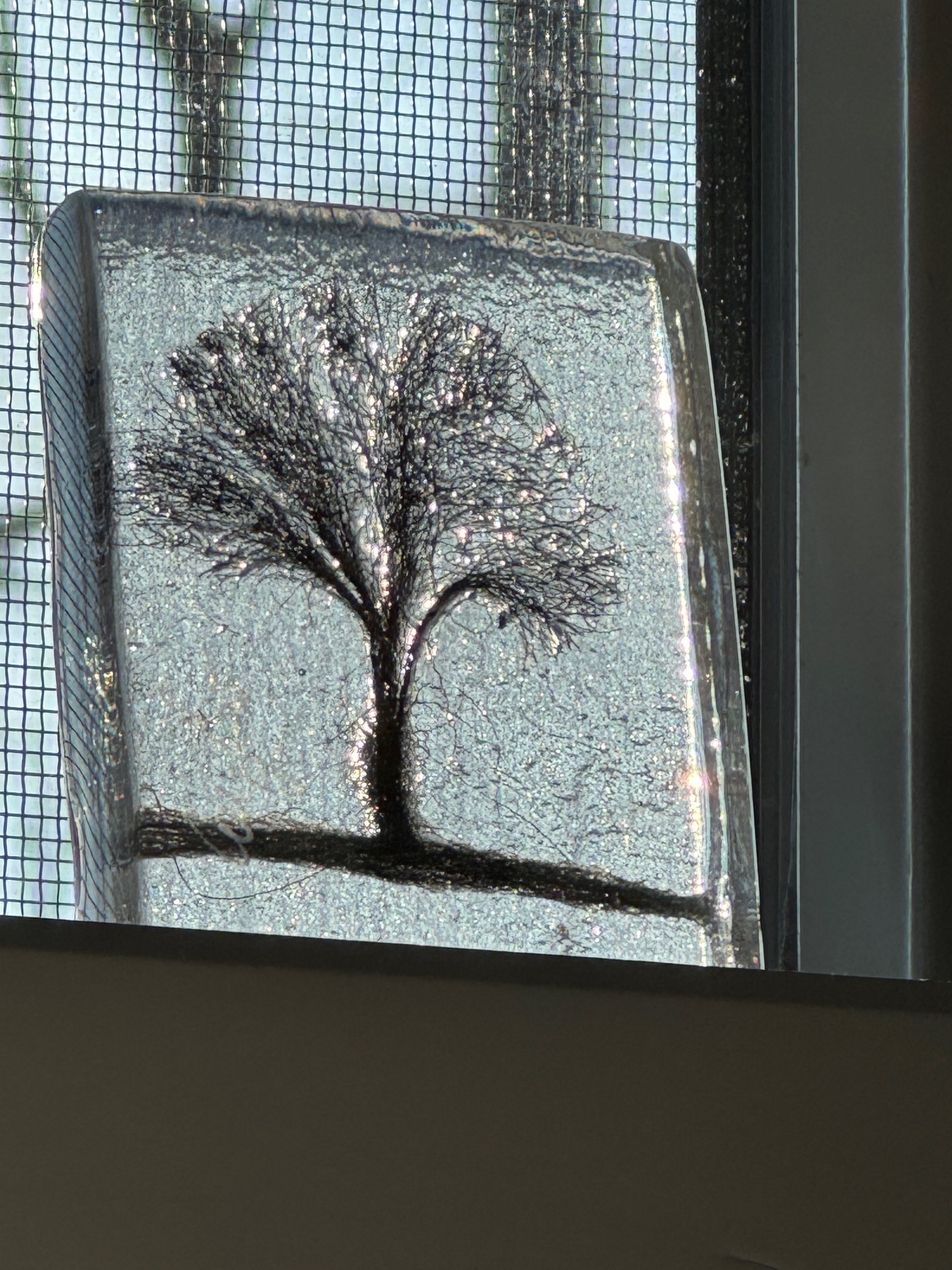 I kept it wrapped up even after we returned to the States. My plan was to open it once we were in our new house, which is what I did. It now sits in my office window, catching the late afternoon sun. And it reminds me of so much. That trip to Italy, which marked the beginning of my personal recovery from the trauma of losing Alex. That day in Venice, which was gloriously fun. The conversation with the kind shopkeeper, whose love for and pride in his father was palpable throughout our exchange. More, that little glass piece is an image of winter, and it sparkles like a gem when the sun hits it. It reminds me that even after a long cold winter, a time of grief and pain, there is always new life and the joy of a new spring.
I kept it wrapped up even after we returned to the States. My plan was to open it once we were in our new house, which is what I did. It now sits in my office window, catching the late afternoon sun. And it reminds me of so much. That trip to Italy, which marked the beginning of my personal recovery from the trauma of losing Alex. That day in Venice, which was gloriously fun. The conversation with the kind shopkeeper, whose love for and pride in his father was palpable throughout our exchange. More, that little glass piece is an image of winter, and it sparkles like a gem when the sun hits it. It reminds me that even after a long cold winter, a time of grief and pain, there is always new life and the joy of a new spring.
 A cliché, to be sure. But as with so many clichés, it’s rooted in truth.
A cliché, to be sure. But as with so many clichés, it’s rooted in truth.
That little tree — the simplicity of steel wool preserved in glass — brings me joy and comfort all out of proportion to its size and cost. I think Alex would love it, too.
When we were getting ready to move, Nancy and I unloaded a lot of stuff. We talked often of the joy we derived from “lightening our lives,” culling from our belongings items we no longer needed or wanted. And I am so glad to have done that work. But I will admit that I still get great pleasure out of many of things we kept, including little tchotchkes (Yiddish for “trinkets” or “little nothings”) like this one.
Wishing you a wonderful week.
Hugh and the Distressing Lack of Videos

It’s Reader Question Monday. We might have to do a Reader Question Wednesday as well, as we received many questions about Amazon and digital ownership.
You mentioned in the introduction that you usually publish a scene but this time would publish a full chapter. It made me wonder if, when planning a book, you explicitly plan for two scenes to a chapter, which seems to be your usual (though not always). Is it a thought out plan or just your natural writing rhythm?
We don’t plan a book in chapters, not do we stick to any rules regarding how long the chapters are or how many scenes they have. Chapters happen because it feels right to have a natural break in the narrative. We have a rough road map of where we are going, but when it comes to actual writing, we plot in chunks.
For example, the current Hugh chunk is
Aberdine sends people -> Hugh goes to Aberdine – > confrontation with the mercenaries.
Originally, we planned on summarizing the Aberdine delegation arrival and kind of stuffing it as a mini-flashback into the scene that opened with Hugh riding toward Aberdine. There didn’t seem like there would be enough happening during that initial meeting to warrant its own scene.
However, as we started writing it and unpacking all of the emotional undercurrents, it grew into its own chapter. This is the joy of writing: the unexpected discoveries.
Why don’t you let people point out the typos?
Because the comment section degenerates into a nitpicking session and then different writing experts start fighting with each other. This is the first draft; it is fragile and unpolished, and too much criticism will kill it. You are seeing it as it is, with all of its flaws. If you want the cleaned up version, you will have to wait until release. Muhahahaha!
So Hugh 2 is being rewritten? In 2020 it was announced that the release was on hold because it was a dark story and the world was in a dark place. I thought that meant it was done. It’s been five years, so when I look around to see if I missed anything it sounds like it may be in progress?
No. Hugh was never written, but we knew what we needed to write and at that particular time, we didn’t have emotional fortitude to do it. Writing books requires a huge emotional investment, because we, as writers, live through he character emotions so we can accurately portray them on the page.
Life interferes as well. Sometimes stuff happens to knock you off your writing rails. Yesterday we didn’t get any writing done because we email the comments from the site to ourselves and Mod R for moderation, and we have to use SMTP for that, because WordPress just kind of quit sending comments to us. For no apparent reason the SMTP callback is failing.

Despite 5 hours with host support chat, it is not fixed. They tossed me back to the SMTP plugin support, which has yet to respond. I wasn’t in the mood to write witty banter after that. I was just tired and needed some tea.
Why don’t you and Gordon make more videos where you talk about writing?
This is one is a little out of the left field. I’m guessing this must’ve come about because of the keyboard typing video. Being a writer and being an influencer are two different things. Writers primarily market their books by doing yet more writing, and influencers primarily provide entertainment while also marketing a product either directly or through ads. Some people admirably combine both.
We are not that great on camera, and we are not very entertaining. We would make terrible influencers. Neither of us has those particular skills and talents. Thankfully, we are not celebrities by any measure, so that is not required of us.
Our posts are mostly about what we do: things we write, things we cook, build, crochet, and so on. It’s less about being a writer and more about the work itself or the process. We try to maintain that boundary between product and person.
Basically, you get enough of me carrying on on the blog. You don’t need us on your YouTube.
See you on Wednesday!
The post Hugh and the Distressing Lack of Videos first appeared on ILONA ANDREWS.
Spotlight on “The Unwanted” by Boris Fishman
The Unwanted is a stunning story of what the most powerless among us will do…
The post Spotlight on “The Unwanted” by Boris Fishman appeared first on LitStack.
Monday Meows
Oh, hell, is it Monday again? I’ve got nothing.
Gzzznorkzzzzzzzzz
I vote we bag it for the week.
I have a tail!
Guns or Butter? Total War: Warhammer II
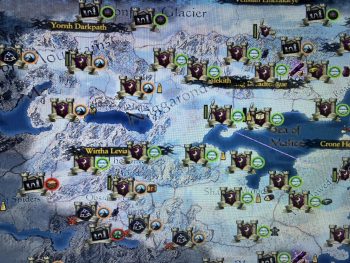 I came to Total War way back when, through TW: Rome. Arriving in 2004, it was the third game in the TW series, after Shogun, and Medieval. I liked it, though I wasn’t addicted – as I was to many games back then. But it was fun marshaling armies, and then marching them out to crush your enemies. I talked about it a little bit a few weeks ago in my RTS overview (man, Myth: The Fallen Lords was such a great game!).
I came to Total War way back when, through TW: Rome. Arriving in 2004, it was the third game in the TW series, after Shogun, and Medieval. I liked it, though I wasn’t addicted – as I was to many games back then. But it was fun marshaling armies, and then marching them out to crush your enemies. I talked about it a little bit a few weeks ago in my RTS overview (man, Myth: The Fallen Lords was such a great game!).
Sort of the “What is best in life?” response from the first Conan movie with Ah-nuld:
“To crush your enemies, see them driven before you, and to hear the lamentations of their women.”
There have been over a dozen incarnations, with the Egyptian-themed Pharaoh just dropping in 2023. What I’d LOOOOOVE, is for them to get the license from the Tolkien Estate and do TW: Middle Earth. I enjoyed Battle for Middle Earth I (never played II). But even a decently-done TW: Middle Earth would be FANTASTIC!!!!
Anywhoo. I’ve never done the Warhammer thing, but TW: Warhammer I came out in 2016. And TW: Warhammer II followed the next year. WH II has become the rabbit hole I periodically jump down. This game is — as my buddy Tony dubbed Diablo II long ago — electronic crack.
If you have WH I, you can use those factions/lords some in WH II. But you don’t need them at all. And while the base game is more than enough, part of the TW fun is buying the DLC – they add heroes, factions, and even a few campaigns. I don’t have WH III, but I the model is the same.
I have all the DLC for both WH I, and II. They are frequently 50% off+ on sale. Total War keeps ‘old’ product at original prices. It’s an annoying business model, and they do a boatload of DLC. But the base games have more than enough content. I just like the extra stuff to check out. And you don’t have to buy it, off course.
The Game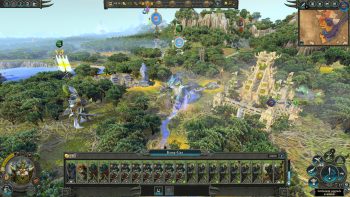 Some basics about Total War – at least, the Warhammer II version. The principles of the series are generally the same. You know what you’re getting, but the engine has evolved over the years. Warhammer II is pretty similar to I. I have not played III yet. I tried to go back to Rome Remastered earlier this year, and that old engine just didn’t work for me anymore.
Some basics about Total War – at least, the Warhammer II version. The principles of the series are generally the same. You know what you’re getting, but the engine has evolved over the years. Warhammer II is pretty similar to I. I have not played III yet. I tried to go back to Rome Remastered earlier this year, and that old engine just didn’t work for me anymore.
The general concept is you take charge of a faction (Elves, dwarves, vampire pirates, etc. In other games it’s Roman families, or medieval countries. You get it).
You build up settlements, and armies on a unit basis, for your faction. You can choose to fight the battles yourself (usually advantageous in outcome) or use auto-resolve. I find the battles time-consuming and not that much fun, so I auto-resolve. The benefits of auto-resolve seem to be reduced from winning the actual fights yourself, though.
Terrain matters in battles, and also on the global map. Dwarven settlements thrive in mountain regions. The vampire lords corrupt the land, making it less/unsuitable for some factions. The lizardmen are primarily in the jungles. So, the faction you choose often impacts what part of the world you start in, and where you choose to expand to.
You attack other armies, and settlements, or colonize ruined ones. You build them up, gaining advantages if you control all the settlements in a single province. You have to balance chasing quests, conquering settlements, and being strong enough on defense to protect what you already have. Random wandering warherds, or rogue armies (frigging pirates) can seriously blow up your plans.
You can form military alliances (as can your enemies), and when you’re strong enough, you can make a confederation with a same-race faction: absorbing all their assets – and their financial obligations!
I just keep playing and trying to expand without a debacle happening. The first ten to fifteen turns usually indicate whether I’m gonna be able to make a go of it with this faction.
Two Game OptionsThe base campaign is Battle for the Vortex. There are game-given quests, and faction quests as well. You try to build up your settlements and armies, eliminate enemies, and accomplish the various quests. I’ve never made it to the end game. Even on Easy, the computer AI is a pain in the ass. I’ve rarely made it past 100 turns before it got too messed up.
WH II also has a Mortal Empires option. It lets you pick any lord/faction from I or II, and compete against all the other factions. Last one standing wins: No over-arching campaign. I’ve played Mortal Empires a few times, and it’s a neat option, but I prefer playing the official campaign. So….
‘Guns or Butter’‘Guns or butter’ is an old economic model that shows how governments have to choose between spending for defense or domestic uses. TW play is a variation on that which is pretty much the over-arching element of the game.
You can primarily choose to spend gold on military units, or settlement buildings (there can be a couple other options, like temporary enhancements, but you’re mostly putting your gold into your settlements, or your armies).
And your armies (you start with one, but need multiple ones to survive) have upkeep costs. So, you have a one-time cost to add the unit, then an ongoing cost per turn, to keep it. The bigger your army, and the more advanced the units you use, the greater your upkeep. Which means less gold for your settlement buildings.
Each Province has a capital settlement, with five levels. And except for a couple exceptions, one to three minor settlements, with three levels. You build up your Province Capital, which opens up additional slots for new buildings. There can be a total of ten building slots in a Capital, and there are usually only three additional slots in a minor settlement.
Building Categories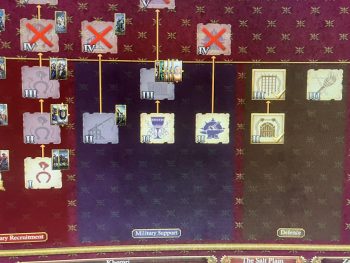 Choosing available options for a small settlement slot
Choosing available options for a small settlement slot
There are different types of ‘chains’ you can pick your settlement upgrades from. I really like this part of game management. And it’s essentially guns or butter. They have different classifications for different factions, but that’s just wording.
Resources – Available in certain settlements. They provide specific goods, like tradable resources (hides, marble, clay), plaques (related to some faction goals), or other benefits. Most settlements do not have this option, so I often take whatever it is. It’s nice when it’s a gold mine, as that is the best source of gold in the game.
Military Recruitment – These produce basic, and advanced, military units.
Basic buildings usually only have three levels, and you can start them when your Province Capital is only first level. They usually offer some other minor benefits, but this is where the meat shields and lower-level units come from. You build your starter armies here.
Advanced buildings usually go up to levels four or five, and provide elite units and enhancements. You need advanced units to get through the middle, and end, games. Purely gun stuff here.
Military Support – These buildings support your armies, lords (Each army is led by a lord), and heroes (a hero is a unique unit that can perform helpful actions and also provides benefits), and settlements. They might make recruitment costs less, reduce your casualty replenishment rates, or let you recruit infantry units with shields. More guns.
Defense – This a limited category, usually letting you add walls to your settlements, or some other defensive improvement for it. I always add walls to smaller settlements, but otherwise, this is my least-used category. As the title implies, this is a defensive category and kind of feels like a mix of guns and butter.
Infrastructure – Here you really get into the guns or butter dichotomy. There’s a wide range of options. Your main gold-making options are here. Also, you can focus on growth (how fast your settlements expand), and public order (if public order gets to-100, you have to put down a rebellion).
There are a lot of options here. Since you only get three additional slots in a smaller settlements, the choices are important. I do try to put up walls in small ones, so, with the Capital building, you only have two free slots. And you’re really choosing between guns and butter.
Misc. -Some settlements have Ports, and some have Landmarks. Ports generate gold and have their own chain. Landmarks are unique to a specific settlement and offer some benefit often worth taking. Even if it’s just a one-level use of a slot.
Choosing Your BuildingThe game randomly has factions declare war on you. And you can also end up at war with other factions through diplomacy options (that’s part of a follow-up post). You need to build up your first army in a hurry (you start the game with a lord and a small army of five-eight units, usually). Some faction is already pissed at you.
It’s tempting to use an early slot to pick a chain with a new military unit. You can get a more diverse, more effective, army, right out of the gate. Guns over butter.
But you gotta pay for all these troop units, and the constantly being constructed new buildings. So, taking that industrial building with a big per turn revenue, is tempting. The gold mine is a no brainer. In a small settlement (remember, only three slots in addition to the Capital), I almost always choose the max revenue building first. I need that stream started to build that first army.
The third (and last) slot usually goes to walls, which help with defense if you end up under siege. It’s the second slot that lets me shade towards guns or butter. For purposes of this discussion, growth and other things that primarily affect the settlement, or my revenue stream, are butter.
Since the capitals have eight to ten slots, and they go up to level five, I tend to use them for the advanced military buildings, to maximize my firepower. Some support, and non-military buildings go up to level five, so you have to factor that in as well. And walls never hurt.
TechnologiesFactions have unique Technology trees. Some are easier to develop than others. But they also reflect the guns or butter dilemma. Especially early on, you can choose technologies (which take multiple terms to develop) to enhance troop unit strength. And also to decrease recruiting costs.
Alternately, technologies that enhance your revenue stream can be vital in providing gold to maintain your growing army. Or building up your settlements.
And any time you can increase your growth or public order, you need to weigh those as immediate needs against those other areas. Butter.
Army Units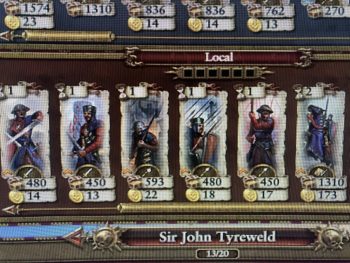 Basic units (like spearmen, or archers) cost a lot less to hire recruit and maintain, than ones such as knights, war eagles, or catapults. The stronger your army, the more it’s gonna cost you. And by mid-game, your main armies had better not still include a bunch of grunts; even if they have leveled up. You needs some higher power units.
Basic units (like spearmen, or archers) cost a lot less to hire recruit and maintain, than ones such as knights, war eagles, or catapults. The stronger your army, the more it’s gonna cost you. And by mid-game, your main armies had better not still include a bunch of grunts; even if they have leveled up. You needs some higher power units.
Armies are capped at a total of 20 units. Do you want a second full-size army? Or two medium-sized ones? Recruit a lord and build a 6 unit army to provide a military presence in a province with falling public order? All those units have an ongoing cost every turn…
You have multiple layers of guns or butter to decide upon. Bad things start to happen if your revenue stream goes negative. And enemies can raid your province, decreasing revenue. Or sack, burn to the ground, or even take over your settlements. And those things can hit your stream.
So, you need to have armies ready not only for attack, but defense. Again – that takes gold.
Wanna hire more lords or heroes? Cha-ching!
In the pic to the right, recruiting a knight will cost about three times as much as recruiting the spearman at arms next to him. But maintaining him each turn will cost ten times more.
So…Budgeting is the allocation of resources among multiple activities. Total War is strategic and tactical game of allocating resources. And basically, you decided whether to spend your gold on guns or butter. And you need the butter to make more gold. To pay for the guns.
I know folks who like playing out the battles. I have fought my share over the years, and I get it. But the faction management part of the game is what keeps me coming back. Guns or butter.
Crusader KingsA quick mention of another game.
For a kingdom management-and-war type of game, the Crusader Kings line (three so far) looks to be the standard. I have tried the first game a few times, and it’s got a MASSIVE learning curve. I think it’s manageable, I just haven’t been motivated to master the basics enough to continue on. But it does look like an awful lot of fun if you figure it out.
Next TimeThere will be a follow-up Total War post, in which I’m going to talk about how I recently had two of my most successful games by applying principles contained in George Washington’s Farewell Address. That was actually the original intent of this post, but I really enjoyed the guns or butter discussion.
Other Video Gaming Posts
RTS’ and Myth: Fallen Lords
Mount and Blade – Part One
Mount and Blade – Part Two
Steamed: What I’ve Been Playing (December, 2023)
Steamed: What I’ve Been Playing (October, 2022)
Fortnite (one of several mentions)

Bob Byrne’s ‘A (Black) Gat in the Hand’ made its Black Gate debut in 2018 and has returned every summer since.
His ‘The Public Life of Sherlock Holmes’ column ran every Monday morning at Black Gate from March, 2014 through March, 2017. And he irregularly posts on Rex Stout’s gargantuan detective in ‘Nero Wolfe’s Brownstone.’ He is a member of the Praed Street Irregulars, founded www.SolarPons.com (the only website dedicated to the ‘Sherlock Holmes of Praed Street’).
He organized Black Gate’s award-nominated ‘Discovering Robert E. Howard’ series, as well as the award-winning ‘Hither Came Conan’ series. Which is now part of THE Definitive guide to Conan. He also organized 2023’s ‘Talking Tolkien.’
He has contributed stories to The MX Book of New Sherlock Holmes Stories — Parts III, IV, V, VI, XXI, and XXXIII.
He has written introductions for Steeger Books, and appeared in several magazines, including Black Mask, Sherlock Holmes Mystery Magazine, The Strand Magazine, and Sherlock Magazine.
The Gorey Century
Yesterday was the 100th birthday of Edward Gorey, one of the most unique, unclassifiable artists that this country has ever produced. Though he died in 2000, he has a continuing cultural presence; he certainly lives on in my life and in the lives of a great many people.
Back in the incumbency of Jimmy Carter, when I was studying theater and living in the dorms of California State University Long Beach, one year I had a roommate named Scott. Scott didn’t fit into our tight-knit little community very well, and while I’ve always prided myself on my ability to get along with everyone, I didn’t get along very well with him. We had a bumpy year together, but I will always be glad that we were roommates, because Scott introduced me to the work of Edward Gorey, and that was a priceless gift that I can never repay him for.
Edward Gorey was a man of many talents — He did scenic and costume design for the stage, winning a Tony Award in 1978 for his costume designs for Dracula (his set design for that production was also nominated) and several of his stories are about ballet, which was one of his supreme passions. Additionally, he did highly individual book covers; for several years he did them for Anchor Paperbacks (including, among many others, editions of H.G. Wells’s The War of the Worlds, Franz Kafka’s Amerika, and T.S. Eliot’s Old Possum’s Book of Practical Cats), which are highly prized today simply for their Gorey covers. He also edited and illustrated a collection of classic ghost stories (1959’s Edward Gorey’s Haunted Looking-Glass) and did covers and illustrations for several of the supernatural mysteries of John Bellairs.
Beginning in the mid-1950’s, Gorey wrote and illustrated his own very short books, and these are the works that his fame mostly rests on. (Many were published under absurdly comical names that are anagrams of his own, like Ogdred Weary or Mrs. Regera Dowdy.) Visually, they are almost always set in the Victorian or Edwardian era (the closest to our own time that I can ever remember him coming was the 1920’s) and are full of bizarre, grotesque, violent, comic, cryptic, and occasionally supernatural incidents, often involving children; in fact, they are usually “children’s books” in form if not in content. The original small hardcover volumes are hard to come by and are pricey when you can find them, but there are four large omnibus volumes, each collecting a dozen or more of the short works — Amphigorey (1972), Amphigorey Too (1975), Amphigorey Also (1983), and Amphigorey Again (2006).
The first thing of Gorey’s that I ever read was “The Hapless Child”, which chronicles the travails of a lovely little girl named Charlotte Sophia. When the story begins, she’s safely ensconced in the bosom of her loving family (“Her parents were kind and well-to-do.”) Then her father, a military man, is reported killed in a native uprising and her grieving mother wastes away and dies, leaving the girl in the cold, utilitarian hands of the family lawyer, who loses no time in sending her to a boarding school where students and staff range from the merely unsympathetic to the positively sadistic. Things rapidly go from bad to worse, and from this point on, the hapless child is subjected to every horror that could befall a person in the most lurid melodrama, all rendered by Gorey in deadpan language and meticulous pen-and-ink images. Things don’t end well for the poor child, and the first time I read her tale, tears rolled down my face, but they weren’t tears of sadness; I was literally shaking with laughter. (Once the story almost got me thrown out of the college library where I was supposed to be working, when I showed it to a friend who was unacquainted with Gorey. We just couldn’t control ourselves.)
It does no good to try and explain to someone who is appalled by “The Hapless Child” rather than delighted by it that what’s being mocked is not the suffering of an innocent child (there was no Charlotte Sophia — Gorey made her up) but rather the reflexive, self-indulgent sentimentality of a hypocritical era and of readers still shackled to its sticky standards. (And one of the things that makes Gorey a complex artist is that he both recognizes the deficiencies of the Victorian age while at the same time clearly adoring many aspects of it.) Either Gorey lands with you or he doesn’t. For myself, there’s nothing that I like more than a good, Gorey story.
Other Gorey delights are “The Willowdale Handcar”, a series of strange, seemingly disjointed incidents that can, with a little imagination and a close examination of the illustrations, be connected into a coherent (if admittedly dark) narrative. (The story features The Black Doll, a sinister, featureless figure which haunts the edges of many of Gorey’s works.) Gorey could be genuinely frightening, as in “The Insect God”, in which huge insects kidnap children and mercilessly sacrifice them to their chitinous deity, and “The West Wing”, a succession of wordless images showing various rooms in a house that you definitely wouldn’t want to spend any time in. (Gorey could make a patch of peeling wallpaper radiate unease.)
Gorey would sometimes make mere objects his protagonists. In “The Inanimate Tragedy” Pins, Needles, a Glass Marble, a Four-Holed Button, and a Piece of Knotted String become embroiled in conflicts and misunderstandings that end in murder and suicide, if those terms are applicable to the fates suffered by a Half-Inch Thumbtack and a No. 37 Penpoint. Gorey would probably say that the word “tragedy” is no more out of place with junk-drawer contents than it is with the equally mundane and transient objects that we call human beings, and in “The Abandoned Sock” you feel genuine apprehension for the sock who foolishly deserts his mate on the clothesline to go adventuring and gets used for a dust rag, chewed by a dog, caught in a tree, and picked apart by birds to use for their nests until nothing is left of it. Does the sock’s life (which it found “tedious and unpleasant” when it was pinned on the line next to its dull mate) turn out all that differently from our own personal dramas?
One of Gorey’s most famous stories is “The Doubtful Guest”, which sees an odd, penguinish-looking creature attired in tennis shoes and a striped scarf turn up one night at the house of a settled, respectable (boring!) family and proceed to turn things upside down. Without ever uttering a sound, the uninvited visitor eats the plates at dinner, tears chapters out of books, suffers fits of bad temper during which it hides all the bath towels, safeguards objects that it takes a liking to (like expensive pocket watches) by dropping them in a pond, eerily sleepwalks up and down the hallways at night, and otherwise disrupts the placid routines of the baffled family, who have no hope of ever going back to life as it was, because “It came seventeen years ago — and to this day / It has shown no intention of going away.” (Many of Gorey’s stories are written in verse.) You understand the family’s frustration and despair, but you may also feel that a little unpredictability might do them some good. I have my own Doubtful Guest — a college friend of my wife made him for me, and I was delighted to learn that Gorey had several himself, that admirers had made and sent to him. (I have a Black Doll too, but that I had to buy.)
Gorey did several alphabet books; the most well-known (images from it have appeared on calendars, tee-shirts, coffee mugs etc.) is “The Ghastlycrumb Tinies.” Here dewy-eyed tots come to shocking and painful ends (“A is for Amy who fell down the stairs / B is for Basil assaulted by bears / C is for Clara who wasted away / D is for Desmond thrown out of a sleigh). Gorey doesn’t imply that these grim events are the children’s faults, but he doesn’t imply that they aren’t, either.
Gorey wasn’t uplifting or heartwarming, (except perhaps in “The Pious Infant”, the story of Henry Clump, a little boy who is too good to live long, and thank God he doesn’t) but now and then justice is served, as it is in “The Bug Book”, one of the few Gorey stories that’s not in black-and-white. In this tale of collective security and well-earned retribution, a peaceful group of bugs have their happy society wrecked by a new bug in the neighborhood, a big, brutish interloper who, despite their best efforts to be friendly and welcoming, “broke up their parties” and “waylaid them whenever they went visiting.” After a secret meeting in the dead of night, the problem is solved by squashing the obstreperous insect flat with a big rock. His remains are placed in an envelope addressed “To whom it may concern” and a pleasant and lively social life is resumed (in Gorey’s world, clearly the happiest of happy endings).
The great Literary critic Edmund Wilson (he who disparaged detective stories and sneered at Tolkien and Lovecraft) was an early admirer of Gorey; he found the artist’s singular little books pleasingly suggestive and allusive. “I find that I like to return to them,” Wilson said. The critic was wrong about a lot of things, but he was right about Edward Gorey. Over almost a half a century, I too have continued to come back to Gorey’s strange, sinister, darkly comic world. There is truly nowhere else like it.
Edward Gorey, this contradictory man who loved attending classical ballet (he was present for every performance of the New York City Ballet for twenty-five straight years) and watching “trash TV movies on the USA Network” was sui generis, the sort of one-of-a-kind genius who can only be appreciated and enjoyed, never imitated or emulated. The mark he set was too high for anyone else to reach… or maybe it would be more accurate to say that it wasn’t too high, exactly; rather, it was too far off to the side.
Whatever deserted house, sinister garden, enigmatic landscape or dimly-lit stage your eccentric spirit now haunts, Edward Gorey, happy birthday to you. Your ashes may have been scattered to the four winds, but your work goes marching on; I fully expect your macabre miniatures to be around for at least another hundred years.
Thomas Parker is a native Southern Californian and a lifelong science fiction, fantasy, and mystery fan. When not corrupting the next generation as a fourth grade teacher, he collects Roger Corman movies, Silver Age comic books, Ace doubles, and despairing looks from his wife. His last article for us was Reading for the End of the World Redux
Tempus fuck it!
In a few short days, Prince of Thorns becomes a teenager and will be the same age as Jorg himself for the first few pages of the novel!
I never expected to be an author. I certainly never expected this guy to pay off my mortgage. And I absolutely didn't expect to still be signing copies of the book in my local Waterstones 13 years after it was published.

The shelf life of an author is typically one book. Fantasy authors more often get a trilogy, because that's how fantasy rolls. But yup, not many of us hang around for long, and the past 13 years are littered with the bright flashes of many fine writers who came along about the same time as me.
I've said - so often that I'm bored of hearing myself say it - that all forms of writing success require large doses of luck. Skill at writing and at story telling are what buys you the lottery ticket. After that you need the stars to align.
It's easy to focus on the hyper-rare examples where the celestial alignment has been of atonishing proportions, and to feel a measure of discontent. But I'm constantly aware that so many fine writers have failed to flourish where I've been fortunate enough to make a living for over a decade now.
So, in part this post is a big thankyou to all you readers who've made that possible.

It's scary to look back at my bibliography and think that (with the exception of the Impossible Times books) each of those novels represents a year of my life. I have grown significantly older doing this...
People often talk to me about pride and about legacy, as if these stories are somehow more of an achievement than the myriad things everyone else has spent the last 13+ years on. I don't subscribe to that point of view, at all. Almost every book is a line drawn in wet sand and if the wave that will wash them away hasn't arrived in 13 years, then it's certainly going to hit the beach at some point, and sooner than most folk think.
I'm pleased and grateful that I've been able to share these stories, but 'proud' isn't a word I'd use. It's ... complicated.
Anyway, enough navel gazing. Just as I had no idea what the 13 years after Prince of Thorns hitting the shelves would look like, I have no idea where we'll be when the book reaches 18 or 21. Will anyone remember Jorg on the 25th anniversary in 2036 ... who knows.
For now though, the ideas keep coming and the itch to write continues to require scratching. I've finished three books this year, and hopefully will have a 4th done by Christmas.
Thanks for reading!

Join my Patreon.Join my 3-emails-a-year newsletter. #Prizes #FreeContent
Mining Our Characters’ Wounds
While we can certainly be forgiven for not seeing our personal wounds as jewels, our most powerful wounds often have as many facets and hidden depths as an exquisitely cut gemstone. They are sharp, with hard edges that not only reflect back light but distort it somewhat.
As writers, we know that our character’s wounds are some of the most fertile ground for creating a rich, fully realized protagonist. But before we can explore this with our characters, we have to understand it ourselves. And because we have all been wounded in some way—and those places are always tender—it can be uncomfortable to look too closely.
In order to use our characters’ wounds to full effect, we need to understand that wounds aren’t simply an attribute to be filled in on a worksheet. They are the rocket fuel for our character’s backstory, the backstory that drives their motivation and colors their world. It must be deeply organic to that character and so intricately woven into their emotional DNA that it distorts the way the see the world and themselves.
While everyone’s wounds are uniquely theirs, they are also universal in that they’re something we all share. What differs is their nature, how we carry them, and the many—often unexpected—ways they shape us and our behavior.
Because of course the impact of any given wound isn’t limited to that initial injury. I was reminded of that last week when I was out walking and twisted my ankle. It was nothing serious, but by the time I’d limped around favoring it for a day or two, everything else was out of whack as I contorted my body to accommodate the injury.
Emotional wounds are just like that, only worse by orders of magnitude.
Even when we know our character’s painful past, we often don’t use it to full effect. We don’t manage to weave into the very essence of who our character is—because make no mistake, wounds fundamentally shape us, especially those incurred in childhood when we are so defenseless. With wounds of the heart or soul—the ones that violate some deep fundamental part—it is the repercussions of that initial wound that create the most scarring. The blame, the self-doubt, the suffocating shame, all serve as a way to cut us off from our core self.
Emotional neglect, a betrayal, a rejection, a lie, are all painful enough, but often become the lens through which we see ourselves. We accept that rejection. Believe that lie. Justify the betrayal due to something fundamentally flawed within us rather than the betrayer. Or worse, we don’t see it as a betrayal at all, but simple evidence of how flawed and unlovable we really are.
The emotionally abandoned child believes they are undeserving of love.
The abused believes they deserve the abuse, that love will always hurt and often comes coated in shame.
The child of addicts learns to fundamentally mistrust the safety and stability of the world around them.
The child raised in a religion that vilifies all human behavior will inevitably see themselves as sinful and unworthy.
Any kind of abuse—emotional, physical, sexual—is often the starting point for a long, twisted, distorted journey from our true selves. And our worldview takes shape around that bad information we’ve deduced because of it.
One of the biggest challenges we face as writers is how to hook our reader emotionally and forge a connection in those first few pages without becoming the literary equivalent of the stranger in the checking line, blurting out every gory detail of the drama of their lives without even having been asked.
The secret, I think, is to show or hint at the character’s contortions and defense mechanisms that have sprung up around that deeper wound. As readers, we’re trained to look for clues and hints, so we’ll spot those coping mechanisms and be intrigued—we’ll want to know why.
So as writers, we need to ask ourselves: In what ways does our character limp through the world? How do they favor that wounded place inside? What distorted belief do they cling to with both hands? What ways do they disassociate from parts of themselves that brush too closely to that wound? In what ways do they wear their wound like a chip on their shoulder, insisting to the world it has made them tough, impervious to future wounding?
And why are these characters indelibly scarred by these events, when others might brush them off or take them in stride?
I believe the answer to that last question is that because for some, the psychic soil has been well prepared and cultivated—their soil broken down and covered in so much manure before the wound even shows up—that the individual is supremely susceptible to the final blow.
But what about characters who don’t have a tragic or traumatic event in their past? What about lesser, garden variety wounds? The kind we acquire from the simple life lessons of growing older or growing up? Because the majority of the time, these shaping wounds are incurred early in life—either in our childhood, teen, or early adult years.
These less traumatic experiences still shape us, although to what degree will vary widely from character to character and will depend on things like the psychic equivalent of adrenaline, momentum, individual pain thresholds, and how cultivated the soil was.
We all have memories from our childhood, of playing with other kids, either on the playground or in the neighborhood, then taking a fall, skinning our knee or scraping an elbow. Chances are we bounced right up and kept on going, utterly impervious to any pain. At least until it was time to come inside and wash up for dinner. THEN we could feel that sucker throbbing and stinging.
Science has also shown that pain thresholds within the same person vary depending on how stressed our systems are. When we are under chronic stress, our body produces a lot more of some chemicals and fewer of others. The reformulation of our brain chemistry intensifies pain response—both physical and emotional.
So even if the story you’re writing does not involve characters with large traumatic wounds in their past, common everyday wounds can be equally fertile ground for deepening character.
- Why does a character have a gambling problem?
- A shopping addiction?
- Why are they terrified of clowns? Cats? Blimps?
- Why do they feel the need to be perfect?
- So competitive?
Each of those behaviors could be fueled by either a traumatic wound or a common every day one. It is the tone and theme of your story that will decide which it should be. Or rather I should say, it is the nature of your character’s wounds that will determine the tone and theme of your story.
We are often our own worst enemy—there is no denying that. Many writers feel that their character is his own antagonist, and that is likely true. Our desperation to avoid acknowledging our wounds, to avoid awakened that old pain and our deeply held beliefs about the nature of that pain are often an enormous component of getting in the way of our own happiness. It is hard and scary to look that deeply inside and reorient our world view, even it if ultimately frees us. It is scary to be thrust back into the same powerlessness and vulnerability we had in that moment. That is why we need stories to show us how.
Some of our character’s most transformative moments will come from facing those wounds, freeing themselves from the weight of them, and beginning the healing process. And of course, the stories we write aren’t about the wounds—but how we can overcome them.
We need stories to show us that being wounded or broken doesn’t lessen our character’s—or our own—humanity in any way. It is, in fact, what make us deeply human. The best stories show us that having been wounded doesn’t mean we are less than, or broken beyond repair, or unworthy. Instead, they illuminate all the different shapes wounds can take and the many different paths to healing that await us, if only we have the courage to look.
Do you know your character’s defining wounds? Can you brainstorm three to four ways these wounds create behaviors that readers can see on the page?
(Originally published on Writer Unboxed April 13, 2018)
IGNITING DARKNESS–Coming June 2, 2020
Hoping to find an ally from the convent, Sybella instead discovers yet another initiate who has been misled and misused by the former abbess of Saint Mortain. But with long held secrets exposed and allegiances revealed, Sybella must form an uneasy trust borne of desperation to combat enemies at the French court who would have them branded as traitors and heretics.

Some mistakes cannot be fixed—that is Genevieve’s growing fear. Though she may have been a fool, she is no coward and will do whatever it takes to set things right and ensure her Queen’s—and Sybella’s—safety. It will take all of Genevieve’s strength of will and cunning, along with Sybella’s willingness to embrace her growing power. But even that may not be enough.

Plans fail, fragile loyalties are tested, and bridges burn in this riveting conclusion to the Courting Darkness duology. Here, the Daughters of Death finally embrace the full depth of their power—and try to make whole that which has been broken, including themselves.
Want to read more? You’re in luck! My publisher is providing an e-sampler of the first eleven chapters. I hope you have as much fun reading it as I did writing it! (And if you get so excited that you feel like pre-ordering the book–be sure to save your receipts! There will be a pre-order gift. Details coming soon!)
The Charbonnerie and the Dark Mother
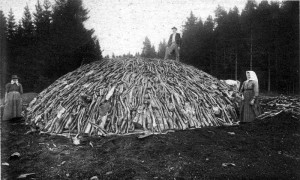 As I wrote Dark Triumph, I wanted to be sure and populate the book with some of the colorful characters from the Middle Ages that I had come across in my research, and yet it had to feel organic to the story and not wedged in there.
As I wrote Dark Triumph, I wanted to be sure and populate the book with some of the colorful characters from the Middle Ages that I had come across in my research, and yet it had to feel organic to the story and not wedged in there.
As Sybella and the wounded knight were racing through the countryside, trying to escape pursuit, I had to do some serious thinking as to who they would actually run in to, and of those people, who would help, who would hinder, and who would turn them in in a heartbeat for a reward. Since they would need to slip into the forest to evade capture, I decided to draw from those who lived in the forests or obtained their livelihood from the woods, and settled upon a group of charcoal burners.
Oddly, it is often the outcasts in society who are most accepting of other outcasts. Their very disenfranchisement sometimes makes them more willing to challenge the status quo or thumb their nose at rigid authority. While charcoal burners were not (probably) true outcasts, they did keep to themselves somewhat, confined by their livelihood to dwelling in forests and tending their charcoal fires rather than living in cities or villages.
In the middle ages, one of the most efficient fuels at the time was charcoal. Coal itself was rare and difficult to mine with their technology, but charcoal could be made through the slow burning of wood, then stopping the process before the wood was fully burned to ash. Charcoal burning was a tricky thing, requiring fairly esoteric knowledge of how to build the fire pits just so, how to pile the wood so it wouldn’t burn too quickly, and how to read the smoke to discern when the charcoal was ready. There were a number of occupational hazards, primarily involving collapsed fire pits and burns. It was also an occupation full of hazard, for a stray spark or ember could start a conflagration in minutes.
As I continued to research charcoal burners, I came across a curious mention of the Carbonnari, a branch of Italian charcoal burners. They started off as a guild, as many medieval trades did, and developed into an organization or brotherhood similar to Freemansons, only with their charcoal burning trade being at the center of their rituals and organizations. While their organization and political involvement was most evident in 19th century Italy, it is believed the groups’ origins began in the middle ages. When I learned they had a French counterpart called the Charbonnerie, I knew I’d found my outcasts.
As a writer, a dozen questions immediately went off in my mind. Who were they? What would compel them to become political and engage themselves in the affairs of the kingdom? How would they make those decisions? And, most importantly in a world populated with patron saints, whom would they worship?
Any deviation from normal church doctrine in the middle ages was rigorously opposed, so it made sense to me that they would worship someone not approved by the church, one of the older gods who’d not make the transition to patron saint.
Dovetailing nicely with this was my personal fascination with the concept of the Black Madonna. There are various theories for the origin of the Black Madonna, whether it was simply the color of Jesus and Mary’s skin before Renaissance artists reimagined them as fair skinned and blonde, or an origin that spoke to possible African roots. There is some speculation that the huge popularity of the cult of the Virgin Mary in the middle ages was a redirecting of earlier earth/mother goddess worship.
But interestingly, over the years I’d also run into mentions of the Black Artemis, rumored to have been worshipped by the Amazons, or Black Demeter, the aspect of the earth goddess when she was in deep mourning for her daughter Persephone. I took all those threads and swirled them around until I had the Dark Matrona, the unsanctioned aspect of Dea Matrona, the former earth goddess now patron saint. I decided that her darkness would be of a more spiritual nature, not unlike the Egyptian god Osiris, for in the Egyptian pantheon, black was not only the color of the underworld, but regeneration as the rich dark silt from the Nile river allowed them to grow their crops each year, and so black was also the color of regeneration, which dovetailed nicely with the book’s themes of finding hope in the darkness.
HFA Refresher: The Mythology of the Nine
While the Nine Old Gods of Brittany are my own invention, they were built on a number of historical, geographical, and ancient theological precedents, so I thought I’d share some of those here for those of you who are curious to know what my inspirations for world of His Fair Assassin were.
As the Catholic Church struggled to gain acceptance among people who were reluctant to let go of their own pagan beliefs, it made a conscious decision to actively subsume those beliefs into Christianity, white washing and Christianizing them along the way. They felt it would make it easier for people to accept the new religion if they could recognize parts of their old beliefs in it.
Brittany was also home to the last remaining group of druidesses, called the Gallinezae, who were said to possess mysterious power. Additionally, Brittany had nine bishoprics, or districts, that were based on the nine earlier Celtic tribes who inhabited the land.
Since Brittany was originally inhabited by the Celtic tribes, I built the mythology of His Fair Assassin on a Celtic foundation. It’s also important to note that I drew from Continental Celtic roots for my mythology rather than the Irish Celts.
Trying to accurately recreate any Celtic beliefs is tricky however, because the Celts themselves did not create any written record of their beliefs or practices; it was all passed along through the oral tradition. In fact, druids in training were required to study for twenty years in order to learn all their lore and history by committing it to memory.
Consequently, nothing of the Celtic religion or spiritual beliefs and practices was written down until they were invaded by Rome. In addition to viewing the Celts practices with scorn, the Romans often interpreted other pantheons according to their own, thus a mother goddess must be equated with Zeus’s wife Hera, or a god of the Underworld with Hades, etc. This Interpretatio romana colored everything we knew about Celtic practices up until fairly recently when improved archaeological techniques and methods began revealing a more complete and accurate picture. The funny thing is though, by the middle ages the myth and folklore of these earlier Celts would have been very much written over and ‘tainted’ by the Romanization of those myths, so that those living in the 15th century would have been more familiar with this Romanized version. Since I set the story in that timeframe, I wanted to be true to that worldview rather than our own, more knowledgeable one.
Here is a list of the Nine Old Gods of Brittany along with their Roman/Greek or Celtic influences/inspiration:
Saint Mortain – god of death. The Celtic equivalent to Dis Pater, the Romanized Celtic god of death, with some similarities to the Welsh Arawn. Greek and Roman counterparts would be Pluto and Hades, but the Celtic Dis Pater had other aspects to him that tied him to older beliefs that enveloped not only the underworld, but the entire cycle of life and death. Also inspired by the Breton figure of personified death, the Ankou.
Dea Matrona – Gaulish mother goddess, responsible for the earth’s bounty. Similar to the Celtic Anu or Ana.
Saint Amourna – daughter of Dea Matrona and one of the twin goddesses of love. Amourna is the gentle aspect of love. The Celtic pantheon had no goddess of love per se, so she definitely has aspects of Aphrodite or Venus. However, the idea of twin sister goddesses representing the dual aspects of love was my own invention.
Saint Arduinna – daughter of Dea Matrona and goddess of love’s sharp bite, protector of virgins. There was a Celtic goddess Arduinna who was a goddess of the forest. Boars, highly revered by the Celts, were sacred to her. Similar to the Gallo-Roman Diana.
Saint Mer – goddess of the sea. While there is no known Celtic god of the sea, there were many deities of springs and lakes, most of whom were goddesses so I decided to make the deity of the sea in my world in keeping with the feminine representations the Celts seemed to favor.
Saint Camulos – god of battle and warriors. Wears a corona of oak leaves and ram’s horns. The Romans equated him with Mars, but I also drew slightly on the cult of Mithros.
Saint Brigantia – goddess of wisdom; brought medicine and healing knowledge to mankind. Based on the Celtic goddess Bridget, who is one of the most widely known pagan goddesses to have become a saint. Her Greek and Roman counterparts would be Athena and Minerva.
Saint Cissonius – god of crossroads and travelers. I took the Celtic Cissonius, god of trade, and expanded on it a bit.
Saint Salonius – god of mistakes and patron saint of bastards. Ah, this is my most historically tenuous god. I have always been a fan of the trickster god who appears in so many pantheons, and I saw a fleeting entry on the Wikipedia Celtic Gods and Goddesses page that reference Salonius, god of mistakes. Alas, when I later went to reference it, the entry was gone and I couldn’t even find it in the Google cache search. Although it seems fitting that my god of mistakes might have been born of one of my own.
HFA Refresher: Anne of Brittany
 Anne of Brittany was a real historic person. At twelve years old, upon the death of her father, she inherited one of the last remaining duchies in Western Europe. By all accounts, she was a remarkable girl. Groomed since birth to inherit the duchy, she was reading and speaking Greek and Latin by the time she was five years old.
Anne of Brittany was a real historic person. At twelve years old, upon the death of her father, she inherited one of the last remaining duchies in Western Europe. By all accounts, she was a remarkable girl. Groomed since birth to inherit the duchy, she was reading and speaking Greek and Latin by the time she was five years old.
Her substantial inheritance was complicated by two things. One, she was a woman at a time when traditionally women did not inherit kingdoms. Since the time of Charlemagne, Salic Law had been invoked to prevent women from becoming rulers. When Anne became Duchess of Brittany, it defied all the conventions of that time. Secondly, and perhaps more importantly, not only was she unmarried, but her father had promised her hand in marriage to at least half a dozen European nobles, if not more. As he plotted and strategized, trying to keep his lands and title safe from the French Crown, he dangled his daughter (and her substantial dowry) as bait for the aid he needed from other princes and dukes. Consequently, when he died, she had been promised to more than one suitor.
To say that this created problems for her in keeping her duchy independent is an understatement. Which is why she needed the help of assassin nuns. What? Doesn’t everybody call for assassin nuns when they’re having political difficulty? If not, they should….
HFA Refresher: Legends of Brittany
In preparation for the publication of COURTING DARKNESS, and because I realize not everyone has time for a re-read of the original trilogy, I thought I would put up some “refresher” posts to help readers reacquaint themselves with the His Fair Assassin world before diving back in. First up: the legends and folklore of Brittany that planted those first seeds in my imagination, lo those many years ago . . .
As I combed through history, looking for the perfect setting for this story, four things caught my attention and eventually solidified into the world of His Fair Assassin. The first was a twelve year old duchess who inherited a kingdom, that inheritance hugely complicated by the fact that she had been promised in marriage to half a dozen princes and nobles.
Next was a mention of the Gallizenae, nine druidesses who lived on the Ile de Sein off the coast of Brittany and possessed mysterious powers.
While Googling for images of the Ile de Sein, I came across of photo of a small, medieval chapel standing next to one of the old, pagan standing stones that are so plentiful in Brittany. It was such a vivid illustration of one of the things that has always fascinated me—how the Catholic Church was so successful at absorbing bits and pieces of the older, ancient religions.
I also learned of a Breton folklore figure call the Ankou, a personification figure of Death.
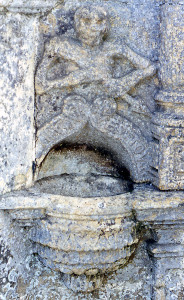
Then lastly, I read about the Passage de l’Enfer—a Breton folktale of fisherman who receive a knock on their door at midnight and were required row the souls of the dead across the ocean at night. Those legends soon became intertwined in my mind and the story idea began to take shape . . .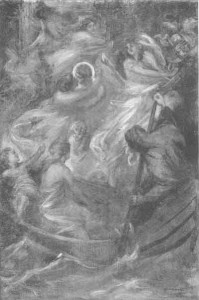
FAQ: Do I Need To Read The HFA Trilogy Before Reading Courting Darkness?
I get asked this a lot, so thought I’d try to address it here.
Courting Darkness is meant to be able to be read without having read the original His Fair Assassin trilogy. But it is not the first book of Sybella’s adventures.
If you read an ARC and were lost—I’m sorry. That is one of the absolute downsides to ARCs—they are unfinished and sometimes relatively unpolished copies. I made THREE more rounds of line edits after the ARCs were printed. A large portion of those changes were to help make Courting Darkness more accessible to new readers and help bring former His Fair Assassin readers up to speed.
I think we succeeded in making it less confusing to new readers. But part of that depends on what sort of reader you are.
Some readers hate to read reviews or synopsis and love trying to piece together the backstory from context clues. Others like every detail spelled out and like a lot of explanation in the narrative. There are definitely readers who hit Courting Darkness cold and thoroughly enjoyed it! Where exactly their reader preferences fell on the above spectrum, I’m not sure.
Part of the problem as a writer was finding a way to revisit the events of Dark Triumph without utterly violating who Sybella is as a character. She is an extraordinarily private person whose past was so difficult that she blocked out most of it for four years. Those early memories will never be something she takes out causally to mull over. To have her do so felt like it cheapened her experience, turning it into something exploitative, even though it would have filled readers in on what had happened in her past. But honestly, I think those experiences of hers will mean more if they are experienced with her rather than recounted in a narrative recap.
So I believe (hope?) you can read Courting Darkness first. With luck, you will enjoy it enough that you’ll want to know more about Sybella and give Dark Triumph a try—it will answer so many questions you might have! But it is very likely that reading Courting Darkness will be a richer experience if you’ve read the trilogy first. But if you haven’t, don’t despair! Sybella’s full backstory will be revisited more fully in the second book in the duology—when events give her no choice but to confront it.

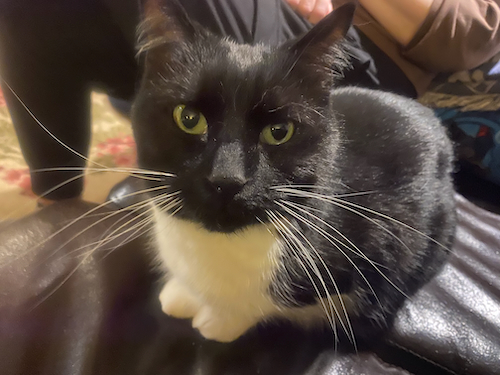
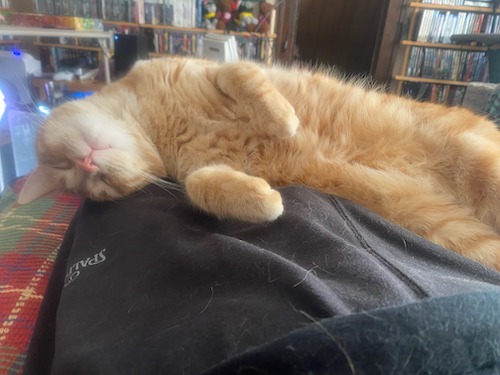
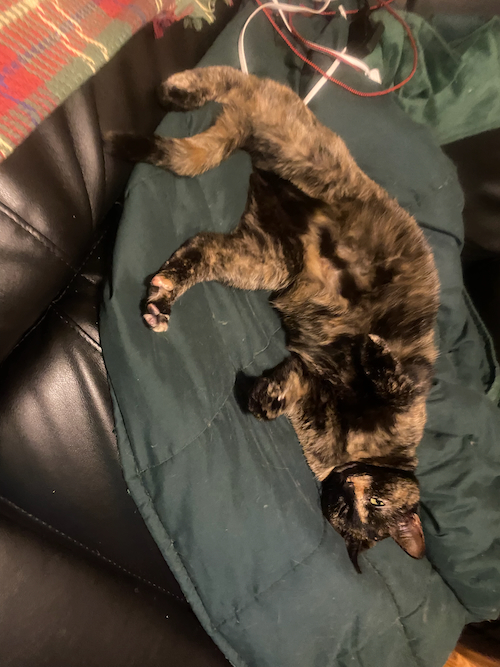
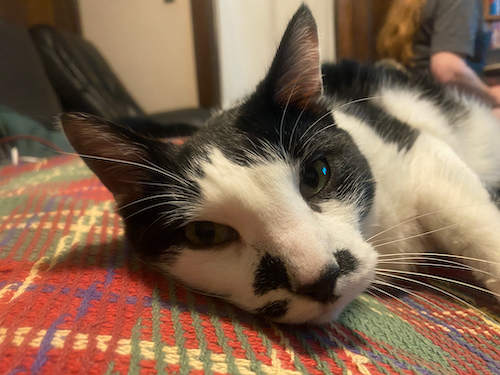


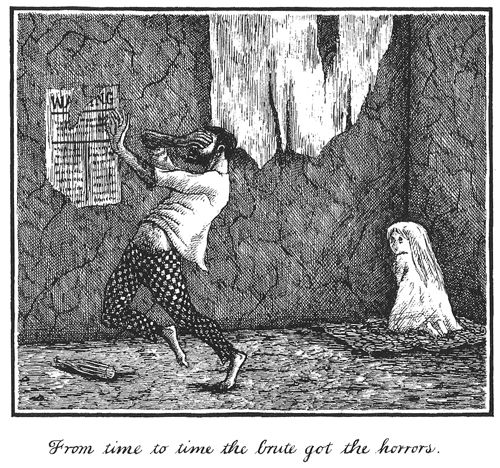
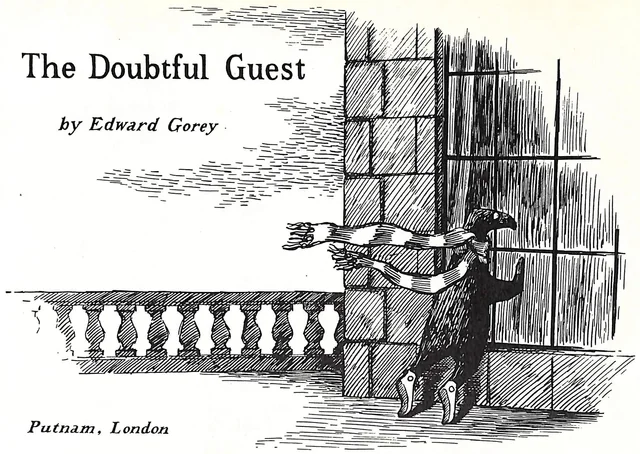
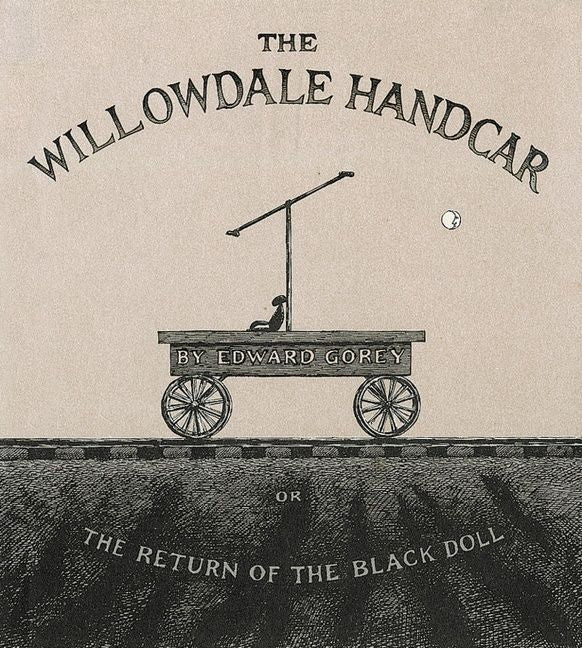

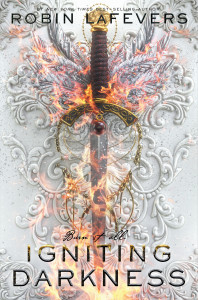
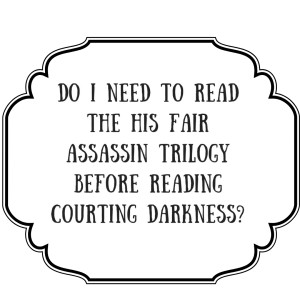
Recent comments